- Essay Guides
- Other Essays
- How to Write an Ethics Paper: Guide & Ethical Essay Examples
- Speech Topics
- Basics of Essay Writing
- Essay Topics
- Main Academic Essays
- Research Paper Topics
- Basics of Research Paper Writing
- Miscellaneous
- Chicago/ Turabian
- Data & Statistics
- Methodology
- Admission Writing Tips
- Admission Advice
- Other Guides
- Student Life
- Studying Tips
- Understanding Plagiarism
- Academic Writing Tips
- Basics of Dissertation & Thesis Writing
- Research Paper Guides
- Formatting Guides
- Basics of Research Process
- Admission Guides
- Dissertation & Thesis Guides

How to Write an Ethics Paper: Guide & Ethical Essay Examples

Table of contents
Use our free Readability checker

You may also like

An ethics essay is a type of academic writing that explores ethical issues and dilemmas. Students should evaluates them in terms of moral principles and values. The purpose of an ethics essay is to examine the moral implications of a particular issue, and provide a reasoned argument in support of an ethical perspective.
Writing an essay about ethics is a tough task for most students. The process involves creating an outline to guide your arguments about a topic and planning your ideas to convince the reader of your feelings about a difficult issue. If you still need assistance putting together your thoughts in composing a good paper, you have come to the right place. We have provided a series of steps and tips to show how you can achieve success in writing. This guide will tell you how to write an ethics paper using ethical essay examples to understand every step it takes to be proficient. In case you don’t have time for writing, get in touch with our professional essay writers for hire . Our experts work hard to supply students with excellent essays.
Ethics essay example 2
Ethics essay example 3
Ethics essay example 4
College ethics essay example 5
Contact our academic writing platform and have your challenge solved. Here, you can order essays and papers on any topic and enjoy top quality.
Daniel Howard is an Essay Writing guru. He helps students create essays that will strike a chord with the readers.
An ethics essay uses moral theories to build arguments on an issue. You describe a controversial problem and examine it to determine how it affects individuals or society. Ethics papers analyze arguments on both sides of a possible dilemma, focusing on right and wrong. The analysis gained can be used to solve real-life cases. Before embarking on writing an ethical essay, keep in mind that most individuals follow moral principles. From a social context perspective, these rules define how a human behaves or acts towards another. Therefore, your theme essay on ethics needs to demonstrate how a person feels about these moral principles. More specifically, your task is to show how significant that issue is and discuss if you value or discredit it.
The primary purpose of an ethics essay is to initiate an argument on a moral issue using reasoning and critical evidence. Instead of providing general information about a problem, you present solid arguments about how you view the moral concern and how it affects you or society. When writing an ethical paper, you demonstrate philosophical competence, using appropriate moral perspectives and principles.
Before you start to write ethics essays, consider a topic you can easily address. In most cases, an ethical issues essay analyzes right and wrong. This includes discussing ethics and morals and how they contribute to the right behaviors. You can also talk about work ethic, code of conduct, and how employees promote or disregard the need for change. However, you can explore other areas by asking yourself what ethics mean to you. Think about how a recent game you watched with friends started a controversial argument. Or maybe a newspaper that highlighted a story you felt was misunderstood or blown out of proportion. This way, you can come up with an excellent topic that resonates with your personal ethics and beliefs.
Sometimes, you will be asked to submit an outline before writing an ethics paper. Creating an outline for an ethics paper is an essential step in creating a good essay. You can use it to arrange your points and supporting evidence before writing. It also helps organize your thoughts, enabling you to fill any gaps in your ideas. The outline for an essay should contain short and numbered sentences to cover the format and outline. Each section is structured to enable you to plan your work and include all sources in writing an ethics paper. An ethics essay outline is as follows:
Using this outline will improve clarity and focus throughout your writing process.
Ethics essays are similar to other essays based on their format, outline, and structure. An ethical essay should have a well-defined introduction, body, and conclusion section as its structure. When planning your ideas, make sure that the introduction and conclusion are around 20 percent of the paper, leaving the rest to the body. We will take a detailed look at what each part entails and give examples that are going to help you understand them better. Refer to our essay structure examples to find a fitting way of organizing your writing.
An ethics essay introduction gives a synopsis of your main argument. One step on how to write an introduction for an ethics paper is telling about the topic and describing its background information. This paragraph should be brief and straight to the point. It informs readers what your position is on that issue. Start with an essay hook to generate interest from your audience. It can be a question you will address or a misunderstanding that leads up to your main argument. You can also add more perspectives to be discussed; this will inform readers on what to expect in the paper.
You can find many ethics essay introduction examples on the internet. In this guide, we have written an excellent extract to demonstrate how it should be structured. As you read, examine how it begins with a hook and then provides background information on an issue.
In this example, the first sentence of the introduction makes a claim or uses a question to hook the reader.
An ethics paper must contain a thesis statement in the first paragraph. Learning how to write a thesis statement for an ethics paper is necessary as readers often look at it to gauge whether the essay is worth their time.
When you deviate away from the thesis, your whole paper loses meaning. In ethics essays, your thesis statement is a roadmap in writing, stressing your position on the problem and giving reasons for taking that stance. It should focus on a specific element of the issue being discussed. When writing a thesis statement, ensure that you can easily make arguments for or against its stance.
Look at this example of an ethics paper thesis statement and examine how well it has been written to state a position and provide reasons for doing so:
The above thesis statement example is clear and concise, indicating that this paper will highlight the effects of dishonesty in society. Moreover, it focuses on aspects of personal and professional relationships.
The body section is the heart of an ethics paper as it presents the author's main points. In an ethical essay, each body paragraph has several elements that should explain your main idea. These include:
When you write an ethics essay, adding relevant examples strengthens your main point and makes it easy for others to understand and comprehend your argument.
A good body paragraph must have a well-defined topic sentence that makes a claim and includes evidence and examples to support it. Look at part of an example of ethics essay body paragraph below and see how its idea has been developed:
A concluding paragraph shares the summary and overview of the author's main arguments. Many students need clarification on what should be included in the essay conclusion and how best to get a reader's attention. When writing an ethics paper conclusion, consider the following:
You can also reflect on the topic or acknowledge any possible challenges or questions that have not been answered. A closing statement should present a call to action on the problem based on your position.
The conclusion paragraph restates the thesis statement and summarizes the arguments presented in that paper. The sample conclusion for an ethical essay example below demonstrates how you should write a concluding statement.
In the above extract, the writer gives final thoughts on the topic, urging readers to adopt honest behavior.
As you learn how to write an ethics essay, it is not advised to immediately choose a topic and begin writing. When you follow this method, you will get stuck or fail to present concrete ideas. A good writer understands the importance of planning. As a fact, you should organize your work and ensure it captures key elements that shed more light on your arguments. Hence, following the essay structure and creating an outline to guide your writing process is the best approach. In the following segment, we have highlighted step-by-step techniques on how to write a good ethics paper.
Before writing ethical papers, brainstorm to find ideal topics that can be easily debated. For starters, make a list, then select a title that presents a moral issue that may be explained and addressed from opposing sides. Make sure you choose one that interests you. Here are a few ideas to help you search for topics:
Once you find a suitable topic and are ready, start to write your ethics essay, conduct preliminary research, and ascertain that there are enough sources to support it.
Once you choose a topic for your essay, the next step is gathering sufficient information about it. Conducting in-depth research entails looking through scholarly journals to find credible material. Ensure you note down all sources you found helpful to assist you on how to write your ethics paper. Use the following steps to help you conduct your research:
An outline will ease up your writing process when developing an ethic essay. As you develop a paper on ethics, jot down factual ideas that will build your paragraphs for each section. Include the following steps in your process:
Examples can also be included to support your main arguments. The structure should be sequential, coherent, and with a good flow from beginning to end. When you follow all steps, you can create an engaging and organized outline that will help you write a good essay.
Once you have selected a topic, conducted research, and outlined your main points, you can begin writing an essay . Ensure you adhere to the ethics paper format you have chosen. Start an ethics paper with an overview of your topic to capture the readers' attention. Build upon your paper by avoiding ambiguous arguments and using the outline to help you write your essay on ethics. Finish the introduction paragraph with a thesis statement that explains your main position. Expand on your thesis statement in all essay paragraphs. Each paragraph should start with a topic sentence and provide evidence plus an example to solidify your argument, strengthen the main point, and let readers see the reasoning behind your stance. Finally, conclude the essay by restating your thesis statement and summarizing all key ideas. Your conclusion should engage the reader, posing questions or urging them to reflect on the issue and how it will impact them.
Proofreading your essay is the last step as you countercheck any grammatical or structural errors in your essay. When writing your ethic paper, typical mistakes you could encounter include the following:
While proofreading your ethical issue essay, read it aloud to detect lexical errors or ambiguous phrases that distort its meaning. Verify your information and ensure it is relevant and up-to-date. You can ask your fellow student to read the essay and give feedback on its structure and quality.
Writing an essay is challenging without the right steps. There are so many ethics paper examples on the internet, however, we have provided a list of free ethics essay examples below that are well-structured and have a solid argument to help you write your paper. Click on them and see how each writing step has been integrated. Ethics essay example 1
When writing papers on ethics, here are several tips to help you complete an excellent essay:
Creating this essay is a common exercise in academics that allows students to build critical skills. When you begin writing, state your stance on an issue and provide arguments to support your position. This guide gives information on how to write an ethics essay as well as examples of ethics papers. Remember to follow these points in your writing:
- Background information
- Thesis statement
- Restate thesis statement
- Summarize key points
- Final thoughts on the topic
- A topic sentence that is precise and reiterates your stance on the issue.
- Evidence supporting it.
- Examples that illustrate your argument.
- A thorough analysis showing how the evidence and examples relate to that issue.
- A transition sentence that connects one paragraph to another with the help of essay transitions .
- Restate the thesis statement to emphasize your position.
- Summarize its main points and evidence.
- Final thoughts on the issue and any other considerations.
- Review current trends affecting people.
- Think about your personal experiences.
- Study different moral theories and principles.
- Examine classical moral dilemmas.
- Clearly state and define a problem you want to discuss.
- This will guide your research process.
- Develop keywords that match the topic.
- Begin searching from a wide perspective. This will allow you to collect more information, then narrow it down by using the identified words above.
- Review the topic and information gathered to write a thesis statement.
- Identify the main arguments you want to discuss and include their evidence.
- Group them into sections, each presenting a new idea that supports the thesis.
- Write an outline.
- Review and refine it.
- Spelling errors: e.g., there, they’re, their.
- Homophone words: such as new vs. knew.
- Inconsistencies: like mixing British and American words, e.g., color vs. color.
- Formatting issues: e.g., double spacing, different font types.
- Choose a narrow topic and avoid broad subjects, as it is easy to cover the topic in detail.
- Ensure you have background information. A good understanding of a topic can make it easy to apply all necessary moral theories and principles in writing your paper.
- State your position clearly. It is important to be sure about your stance as it will allow you to draft your arguments accordingly.
- When writing ethics essays, be mindful of your audience. Provide arguments that they can understand.
- Integrate solid examples into your essay. Morality can be hard to understand; therefore, using them will help a reader grasp these concepts.
- Create an outline highlighting your main points.
- Write an effective introduction and provide background information on an issue.
- Include a thesis statement.
- Develop concrete arguments and their counterarguments, and use examples.
- Sum up all your key points in your conclusion and restate your thesis statement.
What Is an Ethics Essay?
Purpose of an essay on ethics, things to write an essay about ethics on, ethics paper outline, ethical essay structure, ethics paper introduction, ethics essay introduction example, ethics essay thesis statement, ethical paper thesis example, ethics essay body, body paragraph for ethics paper example, ethics essay conclusion, sample ethics paper conclusion, how to write an ethics paper, 1. pick a topic, 2. conduct in-depth research, 3. develop an ethics essay outline, 4. write an ethics essay, 5. proofread your ethics essay, ethics essay examples, ethics essay writing tips, bottom line on writing an ethics paper.
Imagine living in a world where people only lie, and honesty is becoming a scarce commodity. Indeed, modern society is facing this reality as truth and deception can no longer be separated. Technology has facilitated a quick transmission of voluminous information, whereas it's hard separating facts from opinions.
The moral implications of dishonesty are far-reaching as they undermine trust, integrity, and other foundations of society, damaging personal and professional relationships.
Honesty is an essential component of professional integrity. In many fields, trust and credibility are crucial for professionals to build relationships and success. For example, a doctor who is dishonest about a potential side effect of a medication is not only acting unethically but also putting the health and well-being of their patients at risk. Similarly, a dishonest businessman could achieve short-term benefits but will lose their client’s trust.
In conclusion, the implications of dishonesty and the importance of honesty in our lives cannot be overstated. Honesty builds solid relationships, effective communication, and better decision-making. This essay has explored how dishonesty impacts people and that we should value honesty. We hope this essay will help readers assess their behavior and work towards being more honest in their lives.
Writing Ethical Papers: Top Tips to Ace Your Assignment
17 August, 2021
13 minutes read
Author: Kate Smith
Writing a complex essay paper can be a tough task for any student, especially for those who do not have their skills developed well or do not have enough time for lengthy assignments. At the same time, the majority of college students need to keep their grades high to maintain their right to receive merit-based scholarships and continue their studies the next year. To help you with your ethical papers writing, we created this guide. Below, you will find out what an ethical paper is, how to structure it and write it efficiently.
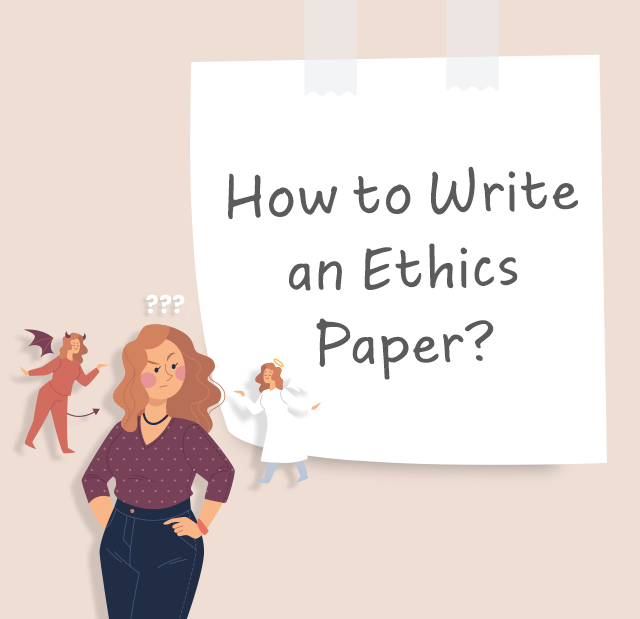
What is an Ethical Paper?
An ethics paper is a type of an argumentative assignment that deals with a certain ethical problem that a student has to describe and solve. Also, it can be an essay where a certain controversial event or concept is elaborated through an ethical lens (e.g. moral rules and principles), or a certain ethical dilemma is explained. Since ethics is connected to moral concepts and choices, a student needs to have a fair knowledge of philosophy and get ready to answer questions related to relationships, justice, professional and social duties, the origin of good and evil, etc., to write a quality paper. Also, writing an ethics paper implies that a student should process a great amount of information regarding their topic and analyze it according to paper terms.
General Aspects of Writing an Ethics Paper
Understanding the ethical papers’ features.
Every essay has differences and features that make it unique. Writing ethical papers implies that a student will use their knowledge of morality and philosophy to resolve a certain ethical dilemma or solve a situation. It can also be a paper in which a student needs to provide their reasoning on ethical or legal circumstances that follow a social issue. Finally, it can be an assignment in which an ethical concept and its application are described. On the contrary, a history essay deals with events that took place somewhen earlier, while a narrative essay is a paper where students demonstrate their storytelling skills, etc.
Defining What Type of Essay Should Be Written
Most of the time, ethical paper topics imply that a student will write an argumentative essay; however, ethics essays can also be descriptive and expository. Each of these essay types has different guidelines for writing, so be sure you know them before you start writing your papers on ethics. In case you missed this step in your ethical paper preparation stage, you would end up writing a paper that misses many important points.
Studying the Ethical Paper Guidelines
Once you get your ethical paper assignment, look through the guidelines that your instructor provided to you. If you receive them during the class, don’t hesitate to pose any questions immediately to remove any misunderstanding before writing an ethics paper outline, or ask for references that you need to use. When you are about to write your first draft, don’t rush: read the paper instructions once again to make sure you understand what is needed from you.
Paying Attention to the Paper Topic
The next thing you need to pay attention to is the ethical paper topic: once you are given one, make sure it falls into the scope of your educational course. After that, consider what additional knowledge may be needed to elaborate on your topic and think about what courses of your program could be helpful for it. Once you are done, read through your topic again to recheck whether you understand your assignment right.
Understanding the Notions of Ethical Arguments, Ethical and Legal Implications, and Ethical Dilemma
Last but not least, another important factor is that a student has to understand the basic terms of the assignment to write a high-quality paper. Ethical arguments are a set of moral rules that are used to defend your position on an ethical issue stated in your essay topic. We refer to ethical versus legal implications when we think about the compensation for certain ethical dilemma outcomes and whether it should be a moral punishment or legal judgment. An ethical dilemma itself refers to a problem or situation which makes an individual doubt what position to take: e.g, abortion, bribery, corruption, etc.
Writing Outline and Structure of an Ethics Paper
Every essay has a structure that makes it a solid piece of writing with straight reasoning and argumentation, and an ethics paper is not an exclusion. This paper has an introduction, body paragraphs, and conclusion. Below, we will describe how each part of ethical papers should be organized and what information they should contain.
First comes the introduction. It is the opening part of your paper which helps a reader to get familiar with your topic and understand what your paper will be about. Therefore, it should contain some information on your ethics paper topics and a thesis statement, which is a central statement of your paper.
The essay body is the most substantive part of your essay where all the reasoning and arguments should be presented. Each paragraph should contain an argument that supports or contradicts your thesis statement and pieces of evidence to support your position. Pick at least three arguments to make your position clear in your essay, and then your paper will be considered well-structured.
The third part of an ethics paper outline is a conclusion, which is a finishing essay part. Its goal is to wrap up the whole essay and make the author’s position clear for the last time. The thoughtful formulation in this essay part should be especially clear and concise to demonstrate the writer’s ability to make conclusions and persuade readers.
Also, don’t forget to include the works cited page after your writing. It should mention all the reference materials that you used in your paper in the order of appearance or in the alphabetical one. This page should be formatted according to the assigned formatting style. Most often, the most frequently used format for ethical papers is APA.
20 Examples of Ethical Paper Topics
- Are there any issues in the 21st century that we can consider immoral and why?
- What is corporate ethics?
- Why is being selfish no longer an issue in 2023?
- Euthanasia: pros and cons
- Marijuana legalization: should it be allowed all over the world?
- Is abortion an ethical issue nowadays?
- Can we invent a universal religion appropriate for all?
- Is the church necessary to pray to God?
- Can we forgive infidelity and should we do it?
- How to react if you are witnessing high school bullying?
- What are the ways to respond to a family abusing individual?
- How to demand your privacy protection in a digital world?
- The history of the American ethical thought
- Can war be ethical and what should the conflicting sides do to make it possible?
- Ethical issues of keeping a zoo in 2023
- Who is in charge of controlling the world’s population?
- How to achieve equality in the world’s rich and poor gap?
- Is science ethical?
- How ethical is genetic engineering?
- Why many countries refuse to go back to carrying out the death penalty?
Ethical Papers Examples
If you still have no idea about how to write an ethics paper, looking through other students’ successful examples is always a good idea. Below, you can find a relevant ethics paper example that you can skim through and see how to build your reasoning and argumentation in your own paper.
https://www.currentschoolnews.com/education-news/ethics-essay-examples/
https://sites.psu.edu/academy/2014/11/18/essay-2-personal-ethics-and-decision-making/
Ethical Papers Writing Tips
Choose a topic that falls into the ethics course program.
In case you were not given the ethics paper topic, consider choosing it yourself. To do that, brainstorm the ethical issues that fascinate you enough to do research. List all these issues on a paper sheet and then cross out those that are too broad or require expertise that you don’t have. The next step you need to take is to choose three or four ethical topics for papers from the list and try to do a quick search online to find out whether these topics are elaborated enough to find sources and reference materials on them. Last, choose one topic that you like the most and find the most relevant one in terms of available data for reference.
Do your research
Once the topic is chosen and organized, dive deeper into it to find the most credible, reliable, and trusted service. Use your university library, online scientific journals, documentaries, and other sources to get the information from. Remember to take notes while working with every new piece of reference material to not forget the ideas that you will base your argumentation on.
Follow the guidelines for a paper outline
During the preparation for your ethical paper and the process of writing it, remember to follow your professor’s instructions (e.g. font, size, spacing, citation style, etc.). If you neglect them, your grade for the paper will decrease significantly.
Write the essay body first
Do not rush to start writing your ethics papers from the very beginning; to write a good essay, you need to have your outline and thesis statement first. Then, go to writing body paragraphs to demonstrate your expertise on the issue you are writing about. Remember that one supporting idea should be covered in one paragraph and should be followed by the piece of evidence that confirms it.
Make sure your introduction and conclusion translate the same message
After your essay body is done, write a conclusion and an introduction for your paper. The main tip regarding these ethics paper parts is that you should make them interrelated: your conclusion has to restate your introduction but not repeat it. Also, a conclusion should wrap up your writing and make it credible for the audience.
Add citations
Every top-quality paper has the works cited page and citations to demonstrate that the research on the topic has been carried out. Therefore, do not omit this point when formatting your paper: add all the sources to the works cited page and pay attention to citing throughout the text. The latter should be done according to the formatting style indicated in your instructions.
Edit your paper
Last but not least is the editing and proofreading stage that you need to carry out before you submit your paper to your instructor. Consider keeping your first draft away from sight for a day or two to have a rest, and then go back to check it for errors and redundant phrases. Don’t rush to change anything immediately after finishing your writing since you are already tired and less focused, so some mistakes may be missed.
Writing Help by Handmadewriting
If you feel that you need help with writing an ethics paper in view of its chellnging nature, you can contact us and send an order through a respective button. You can add your paper details by following all steps of the order placing process that you will find on the website. Once your order is placed, we will get back to you as soon as possible. You will be able to contact your essay writer and let them know all your wishes regarding your ethical paper.
Our writers have expertise in writing ethical papers including, so you don’t need to worry about the quality of the essay that you will receive. Your assignment will be delivered on time and at a reasonable price. Note that urgent papers will cost slightly more than assignments with a postponed deadline, so do not wait too long to make your order. We will be glad to assist you with your writing and guarantee 24/7 support until you receive your paper.
Lastly, remember that no paper can be written overnight, so if you intend to complete your paper in a few hours, you can end up writing only a first draft with imperfections. If you have only half a day before your task is due, feel free to place an urgent order, and we will deliver it in just three hours.

A life lesson in Romeo and Juliet taught by death
Due to human nature, we draw conclusions only when life gives us a lesson since the experience of others is not so effective and powerful. Therefore, when analyzing and sorting out common problems we face, we may trace a parallel with well-known book characters or real historical figures. Moreover, we often compare our situations with […]

Ethical Research Paper Topics
Writing a research paper on ethics is not an easy task, especially if you do not possess excellent writing skills and do not like to contemplate controversial questions. But an ethics course is obligatory in all higher education institutions, and students have to look for a way out and be creative. When you find an […]

Art Research Paper Topics
Students obtaining degrees in fine art and art & design programs most commonly need to write a paper on art topics. However, this subject is becoming more popular in educational institutions for expanding students’ horizons. Thus, both groups of receivers of education: those who are into arts and those who only get acquainted with art […]

Want to create or adapt books like this? Learn more about how Pressbooks supports open publishing practices.
11 The Basics of Ethical Reasoning
The Basics of Ethical Reasoning
Radford University, Radford University Core Handbook, https://lcubbison.pressbooks.com/
Let’s begin by refreshing our memory on what is meant by “ethics.”
Ethics is the study of the standards of right and wrong that inform us as to how we ought to behave. These standards relate to unwritten rules that are necessary for humans to live amongst each other, such as “don’t hurt others.” We function better as a society when we treat each other well.
Ethics can also refer to the standards themselves. They often pertain to rights, obligations, fairness, responsibilities, and specific virtues like honesty and loyalty.
They are supported by consistent and well-founded reasons; as such, they have universal appeal. It’s never good to have a society that supports hurting others as a general rule; honesty and loyalty are positive attributes.
Can we think of instances when hurting others is condoned (such as in war) and where honesty or loyalty may be misplaced? Of course! That’s one of the reasons why ethics are so complicated.
Next, let’s briefly look at what is not “ethics.”
We need to distinguish ethics from what it is not. It’s easier if you can remember that ethics doesn’t change:
Ethics is not what’s legal. The law often puts into writing our ethical standards (don’t hurt others=don’t commit homicide) but it also usually reflects our cultural beliefs at the time. For example, hunting is legal in Virginia, but it would be difficult to say that everyone agrees that it is ethical to hunt. Some people will argue that hunting is ethical because it manages the wildlife population, while others will argue that it is never ethical because it creates pain and suffering.
Ethics is not what you feel . In fact, most times our feelings are very egocentric: what’s best for me and my nearest and dearest? But making judgments based on these sentiments could be detrimental to society as a whole,
Ethics is not religion. Religions may teach ethical standards, and you may personally use religion to guide your beliefs, but people can have ethics without necessarily belonging to a religion. Therefore, ethics and religion are not interchangeable.
Ethics is not a political ideology. A political party may share your values and offer ethical arguments to supports its policies, but your decisions aren’t automatically ethical, just because you belong to one political party or another. In fact, many, if not most, political debates are built from arguments that claim one aspect of an ethical dilemma is more significant than another.
What does it mean to be ethical?
When we explore what it means to be ethical, we are looking at what is rationally “right” and “wrong.” We need to have such conversations so that we can live with other people in society. Philosophers would also argue that the best way to achieve our fullest potential is by being ethical.
In this course, we are not teaching you what to believe. We are building on the skills you learned in Core 201 to identify, evaluate, create and analyze ethical arguments.
Again, let’s look at the terms “ethical” and “moral” and examine if they mean the same thing.
For the purposes of this course, the answer is ‘yes’. The terms ethical and moral are often used as synonyms, and we will adopt this convention and use these terms interchangeably. For most purposes this works fine, but some authors and teachers do see a distinction between these ideas. Usually when the terms are distinguished it is because “morals” can connote very culture-specific norms or expectations. Hence “the mores of the Azande” describes the moral norms of that particular tribe or culture, but without expectation that these norms are universally valid. When “ethics” is contrasted with “morals,” the writer is usually discussing certain normative ethical theories that maintain that certain principles, rules, or virtues have universal ethical validity. A slightly more comprehensive answer would describe the difference; say from an ethical relativist positions definition, as hinging on ethical standards being subjected to the scrutiny of reason or rationality as its fundamental method.
What do we mean by “values”?
Frequently when used in discussions of ethics the term values is used to refer to the fundamental ideals that an individual relies on to describe praise-worthy behavior. A person’s values are the bedrock concepts used to determine their ethical decisions. Most generally speaking values represent aspirational goals common within your culture or society. Values such as honesty, benevolence, wisdom, duty, or compassion are universally recognized laudable and desirable features of a well-developed character. But which values are most important may differ from individual to individual, or across cultures. We could refer to the values of the feudal Japanese samurai culture placing the highest emphasis on the concept of personal honor. We could compare and contrast that with the European knightly virtues as a similar yet distinctively different set of cultural values. We could draw on political beliefs to describe the concepts of equality and freedom at the heart of democratic ideals, contrasting them with a constitutional monarchy that perhaps places the highest importance on duty and tradition as its central political ideals
Let’s examine a few examples of ethical issues.
Ethical issues abound in contemporary society. Ethical issues involve questions of the ethical rightness or wrongness of public policy or personal behavior. Actions or policies that affect other people always have an ethical dimension, but while some people restrict ethical issues to actions that can help or harm others (social ethics) others include personal and self-regarding conduct (personal ethics).
Many of today’s most pressing issues of social ethics are complex and multifaceted and require clear and careful thought. Some of these issues include:
- Should states allow physician-assisted suicide?
- Is the death penalty an ethically acceptable type of punishment?
- Should animals have rights?
- Is society ever justified in regulating so-called victimless crimes like drug use, not wearing a helmet or a seatbelt, etc.?
- What are our responsibilities to future generations?
- Are affluent individuals and countries obligated to try to prevent starvation, malnutrition, and poverty wherever we find them in the world?
- Is there such a thing as a just war?
- How does business ethics relate to corporate responsibility?
To reach careful conclusions, these public policy issues require people to engage in complicated ethical reasoning, but the ethical reasoning involving personal issues can be just as complex and multifaceted:
- What principles do I apply to the way I treat other people?
- What guides my own choices and my own goals in life?
- Should I have the same expectations of others in terms of their behavior and choices as I have of myself?
- Is living ethically compatible or incompatible with what I call living well or happily?
Now you might be asking, “How can I effectively apply critical reasoning to an ethical issue?”
People care quite a bit about ethical issues and often voice varied and even sharply opposed perspectives. So when looking at how we debate ethical issues publicly, it is not surprising to find debate ranging from formal to informal argumentation, and from very carefully constructed arguments with well-qualified conclusions, to very biased positions and quite fallacious forms of persuasion. It’s easy to be dismayed by the discord we find over volatile issues like gun control, immigration policy, and equality in marriage or in the workplace, gender and race equality, abortion and birth control, jobs versus environment, freedom versus security, free speech and censorship, and so on. But it is also easy to go the other direction and be drawn into the often fallacious reasoning we hear all around us.
Critical thinkers want to conduct civil, respectful discourse, and to build bridges in ways that allow progress to be made on difficult issues of common concern. Progress and mutual understanding is not possible when name-calling, inflammatory language, and fallacies are the norm. Some mutual respect, together with the skill of being able to offer a clearly-structured argument for one’s position, undercuts the need to resort to such tactics. So critical thinkers resist trading fallacy for fallacy, and try to introduce common ground that can help resolve disputes by remaining respectful of differences, even about issues personally quite important to them. When we support a thesis (such as a position on one of the above ethical issues) with a clear and well-structured argument, we allow and invite others to engage with us in more constructive fashion. We say essentially, “Here is my thesis and here are my reasons for holding it. If you don’t agree with my claim, then show me what is wrong with my argument, and I will reconsider my view, as any rational person should.”
Another question you may be asking is, “When I debate ethical issues, what is my responsibility to people who are part of the dialogue?”
When we evaluate (analyze) somebody else’s position on an ethical issue, we are not free to simply reject out-of-hand a conclusion we don’t initially agree with. To be reasonable, we must accept the burden of showing where the other person errs in his facts or reasoning. If we cannot show that there are errors in the person’s facts or reasoning, to be reasonable we must reconsider whether we should reject the other person’s conclusion.
By applying the common standards of critical thinking to our reasoning about ethical issues, our arguments will become less emotionally driven and more rational. Our reasoning will become less dependent upon unquestioned beliefs or assumptions that the other people in the conversation may not accept. We become better able to contribute to progressive public debate and conflict resolution through a well-developed ability to articulate a well-reasoned position on an ethical issue.
And, you might be thinking, “What are ethical judgments?”
Ethical judgments are a subclass of value judgments. A value judgment involves an argument as to what is correct, superior, or preferable. In the case of ethics, the value judgment involves making a judgment, claim, or statement about whether an action is morally right or wrong or whether a person’s motives are morally good or bad. Ethical judgments often prescribe as well as evaluate actions, so that to state that someone (or perhaps everyone) ethically “should” or “ought to” do something is also to make an ethical judgment.
And you may be asking yourself, “How can I distinguish ethical judgments from other kinds of value judgments?”
If ethical judgments are a subclass of value judgments, how do we distinguish them? Ethical judgments typically state that some action is good or bad, or right or wrong, in a specifically ethical sense. It is usually not difficult to distinguish non-ethical judgments of goodness and badness from ethical ones. When someone says “That was a good action, because it was caring,” or “That was bad action, because it was cruel” they are clearly intending goodness or badness in a distinctly ethical sense.
By contrast, non-moral value judgments typically say that something is good (or bad) simply for the kind of thing it is; or that some action is right or wrong, given the practical goal or purpose that one has in mind. “That’s a good car” or “That’s a bad bike” would not be considered to moral judgments about those objects. Goodness and badness here are still value judgments, but value judgments that likely track features like comfort, styling, reliability, safety and mileage ratings, etc.
The use of “should” or “ought to” for non-moral value judgments is also easy to recognize. “You ought to enroll early” or “You made the right decision to go to college” are value-judgments, but no one would say they are ethical judgments. They reflect a concern with wholly practical aims rather than ethical ones and with the best way to attain those practical aims.
Let’s end by looking at what is meant by the term “ethical arguments.”
Ethical arguments are arguments whose conclusion makes an ethical judgment. Ethical arguments are most typically arguments that try to show a certain policy or behavior to be either ethical or unethical. Suppose you want to argue that “The death penalty is unjust (or just) punishment” for a certain range of violent crimes. Here we have an ethical judgment, and one that with a bit more detail could serve as the thesis of a position paper on the death penalty debate.
An ethical judgment rises above mere opinion and becomes the conclusion of an ethical argument when you support it with ethical reasoning. You must say why you hold the death penalty to be ethically right or wrong, just or unjust. For instance, you might argue that it is unjust because of one or more of the reasons below:
- It is cruel, and cruel actions are wrong.
- Two wrongs don’t make a right.
- It disrespects human life.
- In some states the penalty falls unevenly on members of a racial group.
- The penalty sometimes results in the execution of innocent people.
Of course you could also give reasons to support the view that the death penalty is a just punishment for certain crimes. The point is that whichever side of the debate you take, your ethical argument should develop ethical reasons and principles rather than economic or other practical but non-moral concerns. To argue merely that the death penalty be abolished because that would save us all money is a possible policy-position, but it is essentially an economic argument rather than an ethical argument.
This work ( The Basics of Ethical Reasoning by Radford University, Radford University Core Handbook, https://lcubbison.pressbooks.com/) is free of known copyright restrictions.
Share This Book

11 Ten Rules for Ethical Arguments
Another Way to Think about Logical Fallacies
Rebecca Jones; Liz Delf; Rob Drummond; and Kristy Kelly
Rebecca Jones Adapted by Liz Delf, Rob Drummond, and Kristy Kelly
Pragma-dialectics is a study of argumentation that focuses on the ethics of one’s logical choices in creating an argument. While this version of argumentation deals with everything from ethics to arrangement, what this field adds to rhetorical studies is a new approach to argument fallacies . Fallacies are often the cause of the mystery feeling we get when we come across faulty logic or missteps in an argument.
What follows is an adaptation of Frans van Eemeren, Rob Grootendorst, and Francesca Snoeck Henkemans’s “violations of the rules for critical engagement” from their book Argumentation: Analysis, Evaluation, Presentation (109). Rather than discuss rhetorical fallacies in a list (ad hominem, straw man, equivocation, etc.), they argue that there should be rules for proper argument to ensure fairness, logic, and a solution to the problem being addressed. Violating these rules causes a fallacious argument and can result in a standoff rather than a solution.
While fallacious arguments, if purposeful, pose real ethical problems, most people do not realize they are committing fallacies when they create an argument. To purposely attack someone’s character rather than their argument (ad hominem) not only is unethical but demonstrates lazy argumentation. However, confusing cause and effect might simply be a misstep that needs fixing. It is important to admit that many fallacies, though making an argument somewhat unsound, can be rhetorically savvy. While we know that appeals to pity (or going overboard on the emotional appeal) can often demonstrate a lack of knowledge or evidence, they often work.
As such, these rules present argumentation as it would play out in a utopian world where everyone is calm and logical, where everyone cares about resolving the argument at hand rather than winning the battle, and where everyone plays by the rules. Despite the utopian nature of the list, it offers valuable insight into argument flaws and offers hope for better methods of deliberation.
I. The Freedom Rule
Parties must not prevent each other from putting forward standpoints or casting doubt on standpoints.
(van Eemeren et al. 110)
There are many ways to stop an individual from giving her own argument. This can come in the form of a physical threat but most often takes the form of a misplaced critique. Instead of focusing on the argument, the focus is shifted to the character of the writer or speaker (ad hominem) or to making the argument (or author) seem absurd (straw man) rather than addressing its actual components. In the past decade, “Bush is stupid” became a common ad hominem attack that allowed policy to go unaddressed. To steer clear of the real issues of global warming, someone might claim, “Only a fool would believe global warming is real” or “Trying to suck all of the CO2 out of the atmosphere with giant greenhouse gas machines is mere science fiction, so we should look at abandoning all this greenhouse gas nonsense.”
II. The Burden-of-Proof Rule
A party who puts forward a standpoint is obliged to defend it if asked to do so.
(van Eemeren et al. 113)
This is one of my favorites. It is clear and simple. If you make an argument, you have to provide evidence to back it up. During the 2008 presidential debates, Americans watched as all the candidates fumbled over the following question about health care: “How will this plan actually work?” If you are presenting a written argument, this requirement can be accommodated through quality, researched evidence applied to your standpoint.
III. The Standpoint Rule
A party’s attack on a standpoint must relate to the standpoint that has indeed been advanced by the other party.
(van Eemeren et al. 116)
Your standpoint is simply your claim, your basic argument in a nutshell. If you disagree with another person’s argument or they disagree with yours, the actual standpoint and not some related but more easily attacked issue must be addressed. For example, one person might argue that the rhetoric of global warming has created a multimillion-dollar green industry benefiting from fears over climate change. This is an argument about the effects of global warming rhetoric, not global warming itself. It would break the standpoint rule to argue that the writer/speaker does not believe in global warming. This is not the issue at hand.
IV. The Relevance Rule
A party may defend his or her standpoint only by advancing argumentation related to that standpoint.
(van Eemeren et al. 119)
Similar to #3 , this rule assures that the evidence you use must actually relate to your standpoint. Let’s stick with the same argument: global warming has created a green industry benefiting from fears over climate change. Under this rule, your evidence would need to offer examples of the rhetoric and the resulting businesses that have developed since the introduction of green industries. It would break the rules to simply offer attacks on businesses that sell “eco-friendly” products.
V. The Unexpressed Premise Rule
A party may not falsely present something as a premise that has been left unexpressed by the other party or deny a premise that he or she has left implicit.
(van Eemeren et al. 121)
This one sounds a bit complex, though it happens nearly every day. If you have been talking to another person and feel the need to say, “That’s not what I meant,” then you have experienced a violation of the unexpressed premise rule. Overall, the rule attempts to keep the argument on track and not let it stray into irrelevant territory. The first violation of the rule, to falsely present what has been left unexpressed, is to rephrase someone’s standpoint in a way that redirects the argument. One person might argue, “I love to go to the beach,” and another might respond by saying, “So you don’t have any appreciation for mountain living.” The other aspect of this rule is to camouflage an unpopular idea and deny that it is part of your argument. For example, you might argue, “I have nothing against my neighbors. I just think that there should be a noise ordinance in this part of town to help cut down on crime.” This clearly shows that the writer does believe her neighbors to be criminals but won’t admit it.
VI. The Starting Point Rule
No party may falsely present a premise as an accepted starting point, or deny a premise representing an accepted starting point.
(van Eemeren et al. 128)
Part of quality argumentation is to agree on the opening standpoint. According to this theory, argument is pointless without this kind of agreement. It is well known that arguing about abortion is nearly pointless as long as one side is arguing about the rights of the unborn and the other about the rights of women. These are two different starting points.
VII. The Argument Scheme Rule
A standpoint may not be regarded as conclusively defended if the defense does not take place by means of an appropriate argument scheme that is correctly applied.
(van Eemeren et al. 130)
This rule is about argument strategy. Argument schemes could take up another paper altogether. Suffice it to say that schemes are ways of approaching an argument, your primary strategy. For example, you might choose emotional rather than logical appeals to present your position. This rule highlights the fact that some argument strategies are simply better than others. For example, if you choose to create an argument based largely on attacking the character of your opponent rather than the issues at hand, the argument is moot.
Argument by analogy is a popular and well-worn argument strategy (or scheme). Essentially, you compare your position to a more commonly known one and make your argument through the comparison. For example, in the “Trust No One” argument in chapter 9, the author equates the Watergate and Monica Lewinsky scandals. Since it is common knowledge that Watergate was a serious scandal, including Monica Lewinsky in the list offers a strong argument by analogy: the Lewinsky scandal did as much damage as Watergate. To break this rule, you might make an analogy that does not hold up, such as comparing a minor scandal involving a local school board to Watergate. This would be an exaggeration, in most cases.
VIII. The Validity Rule
The reasoning in the argumentation must be logically valid or must be capable of being made valid by making explicit one or more unexpressed premises.
(van Eemeren et al. 132)
This rule is about traditional logics. Violating this rule means that the parts of your argument do not match up. For example, your cause and effect might be off: If you swim in the ocean today, you will get stung by a jellyfish and need medical care. Joe went to the doctor today. He must have been stung by a jellyfish. While this example is obvious (we do not know that Joe went swimming), many argument problems are caused by violating this rule.
IX. The Closure Rule
A failed defense of a standpoint must result in the protagonist retracting the standpoint, and a successful defense of a standpoint must result in the antagonist retracting his or her doubts.
(van Eemeren et al. 134)
This seems the most obvious rule, yet it is one that most public arguments ignore. If your argument does not cut it, admit the faults and move on. If another writer/speaker offers a rebuttal and you clearly counter it, admit that the original argument is sound. Seems simple, but it’s not in our public culture. This would mean that George W. Bush would have to have a press conference and say, “My apologies, I was wrong about WMD,” or for someone who argued fervently that Americans want a single-payer option for health care to instead argue something like, “The polls show that Americans want to change health care, but not through the single-payer option. My argument was based on my opinion that the single-payer option is the best way and not on public opinion.” Academics are more accustomed to retraction because our arguments are explicitly part of particular conversations. Rebuttals and renegotiations are the norm. That does not make them any easier to stomach in an “argument is war” culture.
X. The Usage Rule
Parties must not use any formulations that are insufficiently clear or confusingly ambiguous, and they must interpret the formulations of the other party as carefully and accurately as possible.
(van Eemeren et al. 136)
While academics are perhaps the worst violators of this rule, it is an important one to discuss. Be clear. I notice in both student and professional academic writing that a confusing concept often means confusing prose, longer sentences, and more letters in a word. If you cannot say it / write it clearly, the concept might not yet be clear to you. Keep working. Ethical violations of this rule happen when someone is purposefully ambiguous so as to confuse the issue. We can see this on all the “law” shows on television or through deliberate propaganda.
The original chapter, Ten Rules for Ethical Arguments: Another Way to Think about Logical Fallacies by Rebecca Jones, is from Writing Spaces vol 1
Discussion Questions
- Discuss the ethics of argument fallacies. What’s the problem with violating these rules?
- Why is it helpful to identify and learn names for these rules? How does it impact how you may see arguments in the future?
- Is it possible to win the debate but still “lose” by some other measure? How do the ethics of argumentation connect to this question?
- These rules are examples of what not to do—but of course people still do them. Find an example of someone (a politician, a TikTok influencer, a journalist) willfully or unintentionally violating one of these rules. Discuss what they did and how it impacted their argument.
- Find a print ad or short commercial on the internet that violates one of these rules. How so? Why do they do this? Is it effective? Is it manipulative?
- Write a short argument (one to two sentences) about your next paper topic that clearly violates the rule. This can be a poorly framed version of your own argument, or it could be a real (but fallacious) argument that other people make about the issue.
- Explain why this argument violates the rule. Why might someone do this in an argument? Would it be effective? (To be clear, these fallacies are examples of what not to do—but, of course, people still use them.)
- Take the fallacious argument that you just created and correct it: write a solid argument that conforms to the rule.
Works Cited
van Eemeren, Frans H., Rob Grootendorst, and Francesca Snoeck Henkemans. Argumentation: Analysis, Evaluation, Presentation . Routledge, 2002.
Ten Rules for Ethical Arguments Copyright © 2022 by Rebecca Jones; Liz Delf; Rob Drummond; and Kristy Kelly is licensed under a Creative Commons Attribution-NonCommercial-ShareAlike 4.0 International License , except where otherwise noted.

- Table of Contents
- Random Entry
- Chronological
- Editorial Information
- About the SEP
- Editorial Board
- How to Cite the SEP
- Special Characters
- Advanced Tools
- Support the SEP
- PDFs for SEP Friends
- Make a Donation
- SEPIA for Libraries
- Entry Contents
Bibliography
Academic tools.
- Friends PDF Preview
- Author and Citation Info
- Back to Top
Moral Reasoning
While moral reasoning can be undertaken on another’s behalf, it is paradigmatically an agent’s first-personal (individual or collective) practical reasoning about what, morally, they ought to do. Philosophical examination of moral reasoning faces both distinctive puzzles – about how we recognize moral considerations and cope with conflicts among them and about how they move us to act – and distinctive opportunities for gleaning insight about what we ought to do from how we reason about what we ought to do.
Part I of this article characterizes moral reasoning more fully, situates it in relation both to first-order accounts of what morality requires of us and to philosophical accounts of the metaphysics of morality, and explains the interest of the topic. Part II then takes up a series of philosophical questions about moral reasoning, so understood and so situated.
1.1 Defining “Moral Reasoning”
1.2 empirical challenges to moral reasoning, 1.3 situating moral reasoning, 1.4 gaining moral insight from studying moral reasoning, 1.5 how distinct is moral reasoning from practical reasoning in general, 2.1 moral uptake, 2.2 moral principles, 2.3 sorting out which considerations are most relevant, 2.4 moral reasoning and moral psychology, 2.5 modeling conflicting moral considerations, 2.6 moral learning and the revision of moral views, 2.7 how can we reason, morally, with one another, other internet resources, related entries, 1. the philosophical importance of moral reasoning.
This article takes up moral reasoning as a species of practical reasoning – that is, as a type of reasoning directed towards deciding what to do and, when successful, issuing in an intention (see entry on practical reason ). Of course, we also reason theoretically about what morality requires of us; but the nature of purely theoretical reasoning about ethics is adequately addressed in the various articles on ethics . It is also true that, on some understandings, moral reasoning directed towards deciding what to do involves forming judgments about what one ought, morally, to do. On these understandings, asking what one ought (morally) to do can be a practical question, a certain way of asking about what to do. (See section 1.5 on the question of whether this is a distinctive practical question.) In order to do justice to the full range of philosophical views about moral reasoning, we will need to have a capacious understanding of what counts as a moral question. For instance, since a prominent position about moral reasoning is that the relevant considerations are not codifiable, we would beg a central question if we here defined “ morality ” as involving codifiable principles or rules. For present purposes, we may understand issues about what is right or wrong, or virtuous or vicious, as raising moral questions.
Even when moral questions explicitly arise in daily life, just as when we are faced with child-rearing, agricultural, and business questions, sometimes we act impulsively or instinctively rather than pausing to reason, not just about what to do, but about what we ought to do. Jean-Paul Sartre described a case of one of his students who came to him in occupied Paris during World War II, asking advice about whether to stay by his mother, who otherwise would have been left alone, or rather to go join the forces of the Free French, then massing in England (Sartre 1975). In the capacious sense just described, this is probably a moral question; and the young man paused long enough to ask Sartre’s advice. Does that mean that this young man was reasoning about his practical question? Not necessarily. Indeed, Sartre used the case to expound his skepticism about the possibility of addressing such a practical question by reasoning. But what is reasoning?
Reasoning, of the sort discussed here, is active or explicit thinking, in which the reasoner, responsibly guided by her assessments of her reasons (Kolodny 2005) and of any applicable requirements of rationality (Broome 2009, 2013), attempts to reach a well-supported answer to a well-defined question (Hieronymi 2013). For Sartre’s student, at least such a question had arisen. Indeed, the question was relatively definite, implying that the student had already engaged in some reflection about the various alternatives available to him – a process that has well been described as an important phase of practical reasoning, one that aptly precedes the effort to make up one’s mind (Harman 1986, 2).
Characterizing reasoning as responsibly conducted thinking of course does not suffice to analyze the notion. For one thing, it fails to address the fraught question of reasoning’s relation to inference (Harman 1986, Broome 2009). In addition, it does not settle whether formulating an intention about what to do suffices to conclude practical reasoning or whether such intentions cannot be adequately worked out except by starting to act. Perhaps one cannot adequately reason about how to repair a stone wall or how to make an omelet with the available ingredients without actually starting to repair or to cook (cf. Fernandez 2016). Still, it will do for present purposes. It suffices to make clear that the idea of reasoning involves norms of thinking. These norms of aptness or correctness in practical thinking surely do not require us to think along a single prescribed pathway, but rather permit only certain pathways and not others (Broome 2013, 219). Even so, we doubtless often fail to live up to them.
Our thinking, including our moral thinking, is often not explicit. We could say that we also reason tacitly, thinking in much the same way as during explicit reasoning, but without any explicit attempt to reach well-supported answers. In some situations, even moral ones, we might be ill-advised to attempt to answer our practical questions by explicit reasoning. In others, it might even be a mistake to reason tacitly – because, say, we face a pressing emergency. “Sometimes we should not deliberate about what to do, and just drive” (Arpaly and Schroeder 2014, 50). Yet even if we are not called upon to think through our options in all situations, and even if sometimes it would be positively better if we did not, still, if we are called upon to do so, then we should conduct our thinking responsibly: we should reason.
Recent work in empirical ethics has indicated that even when we are called upon to reason morally, we often do so badly. When asked to give reasons for our moral intuitions, we are often “dumbfounded,” finding nothing to say in their defense (Haidt 2001). Our thinking about hypothetical moral scenarios has been shown to be highly sensitive to arbitrary variations, such as in the order of presentation. Even professional philosophers have been found to be prone to such lapses of clear thinking (e.g., Schwitzgebel & Cushman 2012). Some of our dumbfounding and confusion has been laid at the feet of our having both a fast, more emotional way of processing moral stimuli and a slow, more cognitive way (e.g., Greene 2014). An alternative explanation of moral dumbfounding looks to social norms of moral reasoning (Sneddon 2007). And a more optimistic reaction to our confusion sees our established patterns of “moral consistency reasoning” as being well-suited to cope with the clashing input generated by our fast and slow systems (Campbell & Kumar 2012) or as constituting “a flexible learning system that generates and updates a multidimensional evaluative landscape to guide decision and action” (Railton, 2014, 813).
Eventually, such empirical work on our moral reasoning may yield revisions in our norms of moral reasoning. This has not yet happened. This article is principally concerned with philosophical issues posed by our current norms of moral reasoning. For example, given those norms and assuming that they are more or less followed, how do moral considerations enter into moral reasoning, get sorted out by it when they clash, and lead to action? And what do those norms indicate about what we ought to do do?
The topic of moral reasoning lies in between two other commonly addressed topics in moral philosophy. On the one side, there is the first-order question of what moral truths there are, if any. For instance, are there any true general principles of morality, and if so, what are they? At this level utilitarianism competes with Kantianism, for instance, and both compete with anti-theorists of various stripes, who recognize only particular truths about morality (Clarke & Simpson 1989). On the other side, a quite different sort of question arises from seeking to give a metaphysical grounding for moral truths or for the claim that there are none. Supposing there are some moral truths, what makes them true? What account can be given of the truth-conditions of moral statements? Here arise familiar questions of moral skepticism and moral relativism ; here, the idea of “a reason” is wielded by many hoping to defend a non-skeptical moral metaphysics (e.g., Smith 2013). The topic of moral reasoning lies in between these two other familiar topics in the following simple sense: moral reasoners operate with what they take to be morally true but, instead of asking what makes their moral beliefs true, they proceed responsibly to attempt to figure out what to do in light of those considerations. The philosophical study of moral reasoning concerns itself with the nature of these attempts.
These three topics clearly interrelate. Conceivably, the relations between them would be so tight as to rule out any independent interest in the topic of moral reasoning. For instance, if all that could usefully be said about moral reasoning were that it is a matter of attending to the moral facts, then all interest would devolve upon the question of what those facts are – with some residual focus on the idea of moral attention (McNaughton 1988). Alternatively, it might be thought that moral reasoning is simply a matter of applying the correct moral theory via ordinary modes of deductive and empirical reasoning. Again, if that were true, one’s sufficient goal would be to find that theory and get the non-moral facts right. Neither of these reductive extremes seems plausible, however. Take the potential reduction to getting the facts right, first.
Contemporary advocates of the importance of correctly perceiving the morally relevant facts tend to focus on facts that we can perceive using our ordinary sense faculties and our ordinary capacities of recognition, such as that this person has an infection or that this person needs my medical help . On such a footing, it is possible to launch powerful arguments against the claim that moral principles undergird every moral truth (Dancy 1993) and for the claim that we can sometimes perfectly well decide what to do by acting on the reasons we perceive instinctively – or as we have been trained – without engaging in any moral reasoning. Yet this is not a sound footing for arguing that moral reasoning, beyond simply attending to the moral facts, is always unnecessary. On the contrary, we often find ourselves facing novel perplexities and moral conflicts in which our moral perception is an inadequate guide. In addressing the moral questions surrounding whether society ought to enforce surrogate-motherhood contracts, for instance, the scientific and technological novelties involved make our moral perceptions unreliable and shaky guides. When a medical researcher who has noted an individual’s illness also notes the fact that diverting resources to caring, clinically, for this individual would inhibit the progress of my research, thus harming the long-term health chances of future sufferers of this illness , he or she comes face to face with conflicting moral considerations. At this juncture, it is far less plausible or satisfying simply to say that, employing one’s ordinary sensory and recognitional capacities, one sees what is to be done, both things considered. To posit a special faculty of moral intuition that generates such overall judgments in the face of conflicting considerations is to wheel in a deus ex machina . It cuts inquiry short in a way that serves the purposes of fiction better than it serves the purposes of understanding. It is plausible instead to suppose that moral reasoning comes in at this point (Campbell & Kumar 2012).
For present purposes, it is worth noting, David Hume and the moral sense theorists do not count as short-circuiting our understanding of moral reasoning in this way. It is true that Hume presents himself, especially in the Treatise of Human Nature , as a disbeliever in any specifically practical or moral reasoning. In doing so, however, he employs an exceedingly narrow definition of “reasoning” (Hume 2000, Book I, Part iii, sect. ii). For present purposes, by contrast, we are using a broader working gloss of “reasoning,” one not controlled by an ambition to parse out the relative contributions of (the faculty of) reason and of the passions. And about moral reasoning in this broader sense, as responsible thinking about what one ought to do, Hume has many interesting things to say, starting with the thought that moral reasoning must involve a double correction of perspective (see section 2.4 ) adequately to account for the claims of other people and of the farther future, a double correction that is accomplished with the aid of the so-called “calm passions.”
If we turn from the possibility that perceiving the facts aright will displace moral reasoning to the possibility that applying the correct moral theory will displace – or exhaust – moral reasoning, there are again reasons to be skeptical. One reason is that moral theories do not arise in a vacuum; instead, they develop against a broad backdrop of moral convictions. Insofar as the first potentially reductive strand, emphasizing the importance of perceiving moral facts, has force – and it does have some – it also tends to show that moral theories need to gain support by systematizing or accounting for a wide range of moral facts (Sidgwick 1981). As in most other arenas in which theoretical explanation is called for, the degree of explanatory success will remain partial and open to improvement via revisions in the theory (see section 2.6 ). Unlike the natural sciences, however, moral theory is an endeavor that, as John Rawls once put it, is “Socratic” in that it is a subject pertaining to actions “shaped by self-examination” (Rawls 1971, 48f.). If this observation is correct, it suggests that the moral questions we set out to answer arise from our reflections about what matters. By the same token – and this is the present point – a moral theory is subject to being overturned because it generates concrete implications that do not sit well with us on due reflection. This being so, and granting the great complexity of the moral terrain, it seems highly unlikely that we will ever generate a moral theory on the basis of which we can serenely and confidently proceed in a deductive way to generate answers to what we ought to do in all concrete cases. This conclusion is reinforced by a second consideration, namely that insofar as a moral theory is faithful to the complexity of the moral phenomena, it will contain within it many possibilities for conflicts among its own elements. Even if it does deploy some priority rules, these are unlikely to be able to cover all contingencies. Hence, some moral reasoning that goes beyond the deductive application of the correct theory is bound to be needed.
In short, a sound understanding of moral reasoning will not take the form of reducing it to one of the other two levels of moral philosophy identified above. Neither the demand to attend to the moral facts nor the directive to apply the correct moral theory exhausts or sufficiently describes moral reasoning.
In addition to posing philosophical problems in its own right, moral reasoning is of interest on account of its implications for moral facts and moral theories. Accordingly, attending to moral reasoning will often be useful to those whose real interest is in determining the right answer to some concrete moral problem or in arguing for or against some moral theory. The characteristic ways we attempt to work through a given sort of moral quandary can be just as revealing about our considered approaches to these matters as are any bottom-line judgments we may characteristically come to. Further, we may have firm, reflective convictions about how a given class of problems is best tackled, deliberatively, even when we remain in doubt about what should be done. In such cases, attending to the modes of moral reasoning that we characteristically accept can usefully expand the set of moral information from which we start, suggesting ways to structure the competing considerations.
Facts about the nature of moral inference and moral reasoning may have important direct implications for moral theory. For instance, it might be taken to be a condition of adequacy of any moral theory that it play a practically useful role in our efforts at self-understanding and deliberation. It should be deliberation-guiding (Richardson 2018, §1.2). If this condition is accepted, then any moral theory that would require agents to engage in abstruse or difficult reasoning may be inadequate for that reason, as would be any theory that assumes that ordinary individuals are generally unable to reason in the ways that the theory calls for. J.S. Mill (1979) conceded that we are generally unable to do the calculations called for by utilitarianism, as he understood it, and argued that we should be consoled by the fact that, over the course of history, experience has generated secondary principles that guide us well enough. Rather more dramatically, R. M. Hare defended utilitarianism as well capturing the reasoning of ideally informed and rational “archangels” (1981). Taking seriously a deliberation-guidance desideratum for moral theory would favor, instead, theories that more directly inform efforts at moral reasoning by we “proletarians,” to use Hare’s contrasting term.
Accordingly, the close relations between moral reasoning, the moral facts, and moral theory do not eliminate moral reasoning as a topic of interest. To the contrary, because moral reasoning has important implications about moral facts and moral theories, these close relations lend additional interest to the topic of moral reasoning.
The final threshold question is whether moral reasoning is truly distinct from practical reasoning more generally understood. (The question of whether moral reasoning, even if practical, is structurally distinct from theoretical reasoning that simply proceeds from a proper recognition of the moral facts has already been implicitly addressed and answered, for the purposes of the present discussion, in the affirmative.) In addressing this final question, it is difficult to overlook the way different moral theories project quite different models of moral reasoning – again a link that might be pursued by the moral philosopher seeking leverage in either direction. For instance, Aristotle’s views might be as follows: a quite general account can be given of practical reasoning, which includes selecting means to ends and determining the constituents of a desired activity. The difference between the reasoning of a vicious person and that of a virtuous person differs not at all in its structure, but only in its content, for the virtuous person pursues true goods, whereas the vicious person simply gets side-tracked by apparent ones. To be sure, the virtuous person may be able to achieve a greater integration of his or her ends via practical reasoning (because of the way the various virtues cohere), but this is a difference in the result of practical reasoning and not in its structure. At an opposite extreme, Kant’s categorical imperative has been taken to generate an approach to practical reasoning (via a “typic of practical judgment”) that is distinctive from other practical reasoning both in the range of considerations it addresses and its structure (Nell 1975). Whereas prudential practical reasoning, on Kant’s view, aims to maximize one’s happiness, moral reasoning addresses the potential universalizability of the maxims – roughly, the intentions – on which one acts. Views intermediate between Aristotle’s and Kant’s in this respect include Hare’s utilitarian view and Aquinas’ natural-law view. On Hare’s view, just as an ideal prudential agent applies maximizing rationality to his or her own preferences, an ideal moral agent’s reasoning applies maximizing rationality to the set of everyone’s preferences that its archangelic capacity for sympathy has enabled it to internalize (Hare 1981). Thomistic, natural-law views share the Aristotelian view about the general unity of practical reasoning in pursuit of the good, rightly or wrongly conceived, but add that practical reason, in addition to demanding that we pursue the fundamental human goods, also, and distinctly, demands that we not attack these goods. In this way, natural-law views incorporate some distinctively moral structuring – such as the distinctions between doing and allowing and the so-called doctrine of double effect’s distinction between intending as a means and accepting as a by-product – within a unified account of practical reasoning (see entry on the natural law tradition in ethics ). In light of this diversity of views about the relation between moral reasoning and practical or prudential reasoning, a general account of moral reasoning that does not want to presume the correctness of a definite moral theory will do well to remain agnostic on the question of how moral reasoning relates to non-moral practical reasoning.
2. General Philosophical Questions about Moral Reasoning
To be sure, most great philosophers who have addressed the nature of moral reasoning were far from agnostic about the content of the correct moral theory, and developed their reflections about moral reasoning in support of or in derivation from their moral theory. Nonetheless, contemporary discussions that are somewhat agnostic about the content of moral theory have arisen around important and controversial aspects of moral reasoning. We may group these around the following seven questions:
- How do relevant considerations get taken up in moral reasoning?
- Is it essential to moral reasoning for the considerations it takes up to be crystallized into, or ranged under, principles?
- How do we sort out which moral considerations are most relevant?
- In what ways do motivational elements shape moral reasoning?
- What is the best way to model the kinds of conflicts among considerations that arise in moral reasoning?
- Does moral reasoning include learning from experience and changing one’s mind?
- How can we reason, morally, with one another?
The remainder of this article takes up these seven questions in turn.
One advantage to defining “reasoning” capaciously, as here, is that it helps one recognize that the processes whereby we come to be concretely aware of moral issues are integral to moral reasoning as it might more narrowly be understood. Recognizing moral issues when they arise requires a highly trained set of capacities and a broad range of emotional attunements. Philosophers of the moral sense school of the 17th and 18th centuries stressed innate emotional propensities, such as sympathy with other humans. Classically influenced virtue theorists, by contrast, give more importance to the training of perception and the emotional growth that must accompany it. Among contemporary philosophers working in empirical ethics there is a similar divide, with some arguing that we process situations using an innate moral grammar (Mikhail 2011) and some emphasizing the role of emotions in that processing (Haidt 2001, Prinz 2007, Greene 2014). For the moral reasoner, a crucial task for our capacities of moral recognition is to mark out certain features of a situation as being morally salient. Sartre’s student, for instance, focused on the competing claims of his mother and the Free French, giving them each an importance to his situation that he did not give to eating French cheese or wearing a uniform. To say that certain features are marked out as morally salient is not to imply that the features thus singled out answer to the terms of some general principle or other: we will come to the question of particularism, below. Rather, it is simply to say that recognitional attention must have a selective focus.
What will be counted as a moral issue or difficulty, in the sense requiring moral agents’ recognition, will again vary by moral theory. Not all moral theories would count filial loyalty and patriotism as moral duties. It is only at great cost, however, that any moral theory could claim to do without a layer of moral thinking involving situation-recognition. A calculative sort of utilitarianism, perhaps, might be imagined according to which there is no need to spot a moral issue or difficulty, as every choice node in life presents the agent with the same, utility-maximizing task. Perhaps Jeremy Bentham held a utilitarianism of this sort. For the more plausible utilitarianisms mentioned above, however, such as Mill’s and Hare’s, agents need not always calculate afresh, but must instead be alive to the possibility that because the ordinary “landmarks and direction posts” lead one astray in the situation at hand, they must make recourse to a more direct and critical mode of moral reasoning. Recognizing whether one is in one of those situations thus becomes the principal recognitional task for the utilitarian agent. (Whether this task can be suitably confined, of course, has long been one of the crucial questions about whether such indirect forms of utilitarianism, attractive on other grounds, can prevent themselves from collapsing into a more Benthamite, direct form: cf. Brandt 1979.)
Note that, as we have been describing moral uptake, we have not implied that what is perceived is ever a moral fact. Rather, it might be that what is perceived is some ordinary, descriptive feature of a situation that is, for whatever reason, morally relevant. An account of moral uptake will interestingly impinge upon the metaphysics of moral facts, however, if it holds that moral facts can be perceived. Importantly intermediate, in this respect, is the set of judgments involving so-called “thick” evaluative concepts – for example, that someone is callous, boorish, just, or brave (see the entry on thick ethical concepts ). These do not invoke the supposedly “thinner” terms of overall moral assessment, “good,” or “right.” Yet they are not innocent of normative content, either. Plainly, we do recognize callousness when we see clear cases of it. Plainly, too – whatever the metaphysical implications of the last fact – our ability to describe our situations in these thick normative terms is crucial to our ability to reason morally.
It is debated how closely our abilities of moral discernment are tied to our moral motivations. For Aristotle and many of his ancient successors, the two are closely linked, in that someone not brought up into virtuous motivations will not see things correctly. For instance, cowards will overestimate dangers, the rash will underestimate them, and the virtuous will perceive them correctly ( Eudemian Ethics 1229b23–27). By the Stoics, too, having the right motivations was regarded as intimately tied to perceiving the world correctly; but whereas Aristotle saw the emotions as allies to enlist in support of sound moral discernment, the Stoics saw them as inimical to clear perception of the truth (cf. Nussbaum 2001).
That one discerns features and qualities of some situation that are relevant to sizing it up morally does not yet imply that one explicitly or even implicitly employs any general claims in describing it. Perhaps all that one perceives are particularly embedded features and qualities, without saliently perceiving them as instantiations of any types. Sartre’s student may be focused on his mother and on the particular plights of several of his fellow Frenchmen under Nazi occupation, rather than on any purported requirements of filial duty or patriotism. Having become aware of some moral issue in such relatively particular terms, he might proceed directly to sorting out the conflict between them. Another possibility, however, and one that we frequently seem to exploit, is to formulate the issue in general terms: “An only child should stick by an otherwise isolated parent,” for instance, or “one should help those in dire need if one can do so without significant personal sacrifice.” Such general statements would be examples of “moral principles,” in a broad sense. (We do not here distinguish between principles and rules. Those who do include Dworkin 1978 and Gert 1998.)
We must be careful, here, to distinguish the issue of whether principles commonly play an implicit or explicit role in moral reasoning, including well-conducted moral reasoning, from the issue of whether principles necessarily figure as part of the basis of moral truth. The latter issue is best understood as a metaphysical question about the nature and basis of moral facts. What is currently known as moral particularism is the view that there are no defensible moral principles and that moral reasons, or well-grounded moral facts, can exist independently of any basis in a general principle. A contrary view holds that moral reasons are necessarily general, whether because the sources of their justification are all general or because a moral claim is ill-formed if it contains particularities. But whether principles play a useful role in moral reasoning is certainly a different question from whether principles play a necessary role in accounting for the ultimate truth-conditions of moral statements. Moral particularism, as just defined, denies their latter role. Some moral particularists seem also to believe that moral particularism implies that moral principles cannot soundly play a useful role in reasoning. This claim is disputable, as it seems a contingent matter whether the relevant particular facts arrange themselves in ways susceptible to general summary and whether our cognitive apparatus can cope with them at all without employing general principles. Although the metaphysical controversy about moral particularism lies largely outside our topic, we will revisit it in section 2.5 , in connection with the weighing of conflicting reasons.
With regard to moral reasoning, while there are some self-styled “anti-theorists” who deny that abstract structures of linked generalities are important to moral reasoning (Clarke, et al. 1989), it is more common to find philosophers who recognize both some role for particular judgment and some role for moral principles. Thus, neo-Aristotelians like Nussbaum who emphasize the importance of “finely tuned and richly aware” particular discernment also regard that discernment as being guided by a set of generally describable virtues whose general descriptions will come into play in at least some kinds of cases (Nussbaum 1990). “Situation ethicists” of an earlier generation (e.g. Fletcher 1997) emphasized the importance of taking into account a wide range of circumstantial differentiae, but against the background of some general principles whose application the differentiae help sort out. Feminist ethicists influenced by Carol Gilligan’s path breaking work on moral development have stressed the moral centrality of the kind of care and discernment that are salient and well-developed by people immersed in particular relationships (Held 1995); but this emphasis is consistent with such general principles as “one ought to be sensitive to the wishes of one’s friends”(see the entry on feminist moral psychology ). Again, if we distinguish the question of whether principles are useful in responsibly-conducted moral thinking from the question of whether moral reasons ultimately all derive from general principles, and concentrate our attention solely on the former, we will see that some of the opposition to general moral principles melts away.
It should be noted that we have been using a weak notion of generality, here. It is contrasted only with the kind of strict particularity that comes with indexicals and proper names. General statements or claims – ones that contain no such particular references – are not necessarily universal generalizations, making an assertion about all cases of the mentioned type. Thus, “one should normally help those in dire need” is a general principle, in this weak sense. Possibly, such logically loose principles would be obfuscatory in the context of an attempt to reconstruct the ultimate truth-conditions of moral statements. Such logically loose principles would clearly be useless in any attempt to generate a deductively tight “practical syllogism.” In our day-to-day, non-deductive reasoning, however, such logically loose principles appear to be quite useful. (Recall that we are understanding “reasoning” quite broadly, as responsibly conducted thinking: nothing in this understanding of reasoning suggests any uniquely privileged place for deductive inference: cf. Harman 1986. For more on defeasible or “default” principles, see section 2.5 .)
In this terminology, establishing that general principles are essential to moral reasoning leaves open the further question whether logically tight, or exceptionless, principles are also essential to moral reasoning. Certainly, much of our actual moral reasoning seems to be driven by attempts to recast or reinterpret principles so that they can be taken to be exceptionless. Adherents and inheritors of the natural-law tradition in ethics (e.g. Donagan 1977) are particularly supple defenders of exceptionless moral principles, as they are able to avail themselves not only of a refined tradition of casuistry but also of a wide array of subtle – some would say overly subtle – distinctions, such as those mentioned above between doing and allowing and between intending as a means and accepting as a byproduct.
A related role for a strong form of generality in moral reasoning comes from the Kantian thought that one’s moral reasoning must counter one’s tendency to make exceptions for oneself. Accordingly, Kant holds, as we have noted, that we must ask whether the maxims of our actions can serve as universal laws. As most contemporary readers understand this demand, it requires that we engage in a kind of hypothetical generalization across agents, and ask about the implications of everybody acting that way in those circumstances. The grounds for developing Kant’s thought in this direction have been well explored (e.g., Nell 1975, Korsgaard 1996, Engstrom 2009). The importance and the difficulties of such a hypothetical generalization test in ethics were discussed the influential works Gibbard 1965 and Goldman 1974.
Whether or not moral considerations need the backing of general principles, we must expect situations of action to present us with multiple moral considerations. In addition, of course, these situations will also present us with a lot of information that is not morally relevant. On any realistic account, a central task of moral reasoning is to sort out relevant considerations from irrelevant ones, as well as to determine which are especially relevant and which only slightly so. That a certain woman is Sartre’s student’s mother seems arguably to be a morally relevant fact; what about the fact (supposing it is one) that she has no other children to take care of her? Addressing the task of sorting what is morally relevant from what is not, some philosophers have offered general accounts of moral relevant features. Others have given accounts of how we sort out which of the relevant features are most relevant, a process of thinking that sometimes goes by the name of “casuistry.”
Before we look at ways of sorting out which features are morally relevant or most morally relevant, it may be useful to note a prior step taken by some casuists, which was to attempt to set out a schema that would capture all of the features of an action or proposed action. The Roman Catholic casuists of the middle ages did so by drawing on Aristotle’s categories. Accordingly, they asked, where, when, why, how, by what means, to whom, or by whom the action in question is to be done or avoided (see Jonsen and Toulmin 1988). The idea was that complete answers to these questions would contain all of the features of the action, of which the morally relevant ones would be a subset. Although metaphysically uninteresting, the idea of attempting to list all of an action’s features in this way represents a distinctive – and extreme – heuristic for moral reasoning.
Turning to the morally relevant features, one of the most developed accounts is Bernard Gert’s. He develops a list of features relevant to whether the violation of a moral rule should be generally allowed. Given the designed function of Gert’s list, it is natural that most of his morally relevant features make reference to the set of moral rules he defended. Accordingly, some of Gert’s distinctions between dimensions of relevant features reflect controversial stances in moral theory. For example, one of the dimensions is whether “the violation [is] done intentionally or only knowingly” (Gert 1998, 234) – a distinction that those who reject the doctrine of double effect would not find relevant.
In deliberating about what we ought, morally, to do, we also often attempt to figure out which considerations are most relevant. To take an issue mentioned above: Are surrogate motherhood contracts more akin to agreements with babysitters (clearly acceptable) or to agreements with prostitutes (not clearly so)? That is, which feature of surrogate motherhood is more relevant: that it involves a contract for child-care services or that it involves payment for the intimate use of the body? Both in such relatively novel cases and in more familiar ones, reasoning by analogy plays a large role in ordinary moral thinking. When this reasoning by analogy starts to become systematic – a social achievement that requires some historical stability and reflectiveness about what are taken to be moral norms – it begins to exploit comparison to cases that are “paradigmatic,” in the sense of being taken as settled. Within such a stable background, a system of casuistry can develop that lends some order to the appeal to analogous cases. To use an analogy: the availability of a widely accepted and systematic set of analogies and the availability of what are taken to be moral norms may stand to one another as chicken does to egg: each may be an indispensable moment in the genesis of the other.
Casuistry, thus understood, is an indispensable aid to moral reasoning. At least, that it is would follow from conjoining two features of the human moral situation mentioned above: the multifariousness of moral considerations that arise in particular cases and the need and possibility for employing moral principles in sound moral reasoning. We require moral judgment, not simply a deductive application of principles or a particularist bottom-line intuition about what we should do. This judgment must be responsible to moral principles yet cannot be straightforwardly derived from them. Accordingly, our moral judgment is greatly aided if it is able to rest on the sort of heuristic support that casuistry offers. Thinking through which of two analogous cases provides a better key to understanding the case at hand is a useful way of organizing our moral reasoning, and one on which we must continue to depend. If we lack the kind of broad consensus on a set of paradigm cases on which the Renaissance Catholic or Talmudic casuists could draw, our casuistic efforts will necessarily be more controversial and tentative than theirs; but we are not wholly without settled cases from which to work. Indeed, as Jonsen and Toulmin suggest at the outset of their thorough explanation and defense of casuistry, the depth of disagreement about moral theories that characterizes a pluralist society may leave us having to rest comparatively more weight on the cases about which we can find agreement than did the classic casuists (Jonsen and Toulmin 1988).
Despite the long history of casuistry, there is little that can usefully be said about how one ought to reason about competing analogies. In the law, where previous cases have precedential importance, more can be said. As Sunstein notes (Sunstein 1996, chap. 3), the law deals with particular cases, which are always “potentially distinguishable” (72); yet the law also imposes “a requirement of practical consistency” (67). This combination of features makes reasoning by analogy particularly influential in the law, for one must decide whether a given case is more like one set of precedents or more like another. Since the law must proceed even within a pluralist society such as ours, Sunstein argues, we see that analogical reasoning can go forward on the basis of “incompletely theorized judgments” or of what Rawls calls an “overlapping consensus” (Rawls 1996). That is, although a robust use of analogous cases depends, as we have noted, on some shared background agreement, this agreement need not extend to all matters or all levels of individuals’ moral thinking. Accordingly, although in a pluralist society we may lack the kind of comprehensive normative agreement that made the high casuistry of Renaissance Christianity possible, the path of the law suggests that normatively forceful, case-based, analogical reasoning can still go on. A modern, competing approach to case-based or precedent-respecting reasoning has been developed by John F. Horty (2016). On Horty’s approach, which builds on the default logic developed in (Horty 2012), the body of precedent systematically shifts the weights of the reasons arising in a new case.
Reasoning by appeal to cases is also a favorite mode of some recent moral philosophers. Since our focus here is not on the methods of moral theory, we do not need to go into any detail in comparing different ways in which philosophers wield cases for and against alternative moral theories. There is, however, an important and broadly applicable point worth making about ordinary reasoning by reference to cases that emerges most clearly from the philosophical use of such reasoning. Philosophers often feel free to imagine cases, often quite unlikely ones, in order to attempt to isolate relevant differences. An infamous example is a pair of cases offered by James Rachels to cast doubt on the moral significance of the distinction between killing and letting die, here slightly redescribed. In both cases, there is at the outset a boy in a bathtub and a greedy older cousin downstairs who will inherit the family manse if and only if the boy predeceases him (Rachels 1975). In Case A, the cousin hears a thump, runs up to find the boy unconscious in the bath, and reaches out to turn on the tap so that the water will rise up to drown the boy. In Case B, the cousin hears a thump, runs up to find the boy unconscious in the bath with the water running, and decides to sit back and do nothing until the boy drowns. Since there is surely no moral difference between these cases, Rachels argued, the general distinction between killing and letting die is undercut. “Not so fast!” is the well-justified reaction (cf. Beauchamp 1979). Just because a factor is morally relevant in a certain way in comparing one pair of cases does not mean that it either is or must be relevant in the same way or to the same degree when comparing other cases. Shelly Kagan has dubbed the failure to take account of this fact of contextual interaction when wielding comparison cases the “additive fallacy” (1988). Kagan concludes from this that the reasoning of moral theorists must depend upon some theory that helps us anticipate and account for ways in which factors will interact in various contexts. A parallel lesson, reinforcing what we have already observed in connection with casuistry proper, would apply for moral reasoning in general: reasoning from cases must at least implicitly rely upon a set of organizing judgments or beliefs, of a kind that would, on some understandings, count as a moral “theory.” If this is correct, it provides another kind of reason to think that moral considerations could be crystallized into principles that make manifest the organizing structure involved.
We are concerned here with moral reasoning as a species of practical reasoning – reasoning directed to deciding what to do and, if successful, issuing in an intention. But how can such practical reasoning succeed? How can moral reasoning hook up with motivationally effective psychological states so as to have this kind of causal effect? “Moral psychology” – the traditional name for the philosophical study of intention and action – has a lot to say to such questions, both in its traditional, a priori form and its newly popular empirical form. In addition, the conclusions of moral psychology can have substantive moral implications, for it may be reasonable to assume that if there are deep reasons that a given type of moral reasoning cannot be practical, then any principles that demand such reasoning are unsound. In this spirit, Samuel Scheffler has explored “the importance for moral philosophy of some tolerably realistic understanding of human motivational psychology” (Scheffler 1992, 8) and Peter Railton has developed the idea that certain moral principles might generate a kind of “alienation” (Railton 1984). In short, we may be interested in what makes practical reasoning of a certain sort psychologically possible both for its own sake and as a way of working out some of the content of moral theory.
The issue of psychological possibility is an important one for all kinds of practical reasoning (cf. Audi 1989). In morality, it is especially pressing, as morality often asks individuals to depart from satisfying their own interests. As a result, it may appear that moral reasoning’s practical effect could not be explained by a simple appeal to the initial motivations that shape or constitute someone’s interests, in combination with a requirement, like that mentioned above, to will the necessary means to one’s ends. Morality, it may seem, instead requires individuals to act on ends that may not be part of their “motivational set,” in the terminology of Williams 1981. How can moral reasoning lead people to do that? The question is a traditional one. Plato’s Republic answered that the appearances are deceiving, and that acting morally is, in fact, in the enlightened self-interest of the agent. Kant, in stark contrast, held that our transcendent capacity to act on our conception of a practical law enables us to set ends and to follow morality even when doing so sharply conflicts with our interests. Many other answers have been given. In recent times, philosophers have defended what has been called “internalism” about morality, which claims that there is a necessary conceptual link between agents’ moral judgment and their motivation. Michael Smith, for instance, puts the claim as follows (Smith 1994, 61):
If an agent judges that it is right for her to Φ in circumstances C , then either she is motivated to Φ in C or she is practically irrational.
Even this defeasible version of moral judgment internalism may be too strong; but instead of pursuing this issue further, let us turn to a question more internal to moral reasoning. (For more on the issue of moral judgment internalism, see moral motivation .)
The traditional question we were just glancing at picks up when moral reasoning is done. Supposing that we have some moral conclusion, it asks how agents can be motivated to go along with it. A different question about the intersection of moral reasoning and moral psychology, one more immanent to the former, concerns how motivational elements shape the reasoning process itself.
A powerful philosophical picture of human psychology, stemming from Hume, insists that beliefs and desires are distinct existences (Hume 2000, Book II, part iii, sect. iii; cf. Smith 1994, 7). This means that there is always a potential problem about how reasoning, which seems to work by concatenating beliefs, links up to the motivations that desire provides. The paradigmatic link is that of instrumental action: the desire to Ψ links with the belief that by Φing in circumstances C one will Ψ. Accordingly, philosophers who have examined moral reasoning within an essentially Humean, belief-desire psychology have sometimes accepted a constrained account of moral reasoning. Hume’s own account exemplifies the sort of constraint that is involved. As Hume has it, the calm passions support the dual correction of perspective constitutive of morality, alluded to above. Since these calm passions are seen as competing with our other passions in essentially the same motivational coinage, as it were, our passions limit the reach of moral reasoning.
An important step away from a narrow understanding of Humean moral psychology is taken if one recognizes the existence of what Rawls has called “principle-dependent desires” (Rawls 1996, 82–83; Rawls 2000, 46–47). These are desires whose objects cannot be characterized without reference to some rational or moral principle. An important special case of these is that of “conception-dependent desires,” in which the principle-dependent desire in question is seen by the agent as belonging to a broader conception, and as important on that account (Rawls 1996, 83–84; Rawls 2000, 148–152). For instance, conceiving of oneself as a citizen, one may desire to bear one’s fair share of society’s burdens. Although it may look like any content, including this, may substitute for Ψ in the Humean conception of desire, and although Hume set out to show how moral sentiments such as pride could be explained in terms of simple psychological mechanisms, his influential empiricism actually tends to restrict the possible content of desires. Introducing principle-dependent desires thus seems to mark a departure from a Humean psychology. As Rawls remarks, if “we may find ourselves drawn to the conceptions and ideals that both the right and the good express … , [h]ow is one to fix limits on what people might be moved by in thought and deliberation and hence may act from?” (1996, 85). While Rawls developed this point by contrasting Hume’s moral psychology with Kant’s, the same basic point is also made by neo-Aristotelians (e.g., McDowell 1998).
The introduction of principle-dependent desires bursts any would-be naturalist limit on their content; nonetheless, some philosophers hold that this notion remains too beholden to an essentially Humean picture to be able to capture the idea of a moral commitment. Desires, it may seem, remain motivational items that compete on the basis of strength. Saying that one’s desire to be just may be outweighed by one’s desire for advancement may seem to fail to capture the thought that one has a commitment – even a non-absolute one – to justice. Sartre designed his example of the student torn between staying with his mother and going to fight with the Free French so as to make it seem implausible that he ought to decide simply by determining which he more strongly wanted to do.
One way to get at the idea of commitment is to emphasize our capacity to reflect about what we want. By this route, one might distinguish, in the fashion of Harry Frankfurt, between the strength of our desires and “the importance of what we care about” (Frankfurt 1988). Although this idea is evocative, it provides relatively little insight into how it is that we thus reflect. Another way to model commitment is to take it that our intentions operate at a level distinct from our desires, structuring what we are willing to reconsider at any point in our deliberations (e.g. Bratman 1999). While this two-level approach offers some advantages, it is limited by its concession of a kind of normative primacy to the unreconstructed desires at the unreflective level. A more integrated approach might model the psychology of commitment in a way that reconceives the nature of desire from the ground up. One attractive possibility is to return to the Aristotelian conception of desire as being for the sake of some good or apparent good (cf. Richardson 2004). On this conception, the end for the sake of which an action is done plays an important regulating role, indicating, in part, what one will not do (Richardson 2018, §§8.3–8.4). Reasoning about final ends accordingly has a distinctive character (see Richardson 1994, Schmidtz 1995). Whatever the best philosophical account of the notion of a commitment – for another alternative, see (Tiberius 2000) – much of our moral reasoning does seem to involve expressions of and challenges to our commitments (Anderson and Pildes 2000).
Recent experimental work, employing both survey instruments and brain imaging technologies, has allowed philosophers to approach questions about the psychological basis of moral reasoning from novel angles. The initial brain data seems to show that individuals with damage to the pre-frontal lobes tend to reason in more straightforwardly consequentialist fashion than those without such damage (Koenigs et al. 2007). Some theorists take this finding as tending to confirm that fully competent human moral reasoning goes beyond a simple weighing of pros and cons to include assessment of moral constraints (e.g., Wellman & Miller 2008, Young & Saxe 2008). Others, however, have argued that the emotional responses of the prefrontal lobes interfere with the more sober and sound, consequentialist-style reasoning of the other parts of the brain (e.g. Greene 2014). The survey data reveals or confirms, among other things, interesting, normatively loaded asymmetries in our attribution of such concepts as responsibility and causality (Knobe 2006). It also reveals that many of moral theory’s most subtle distinctions, such as the distinction between an intended means and a foreseen side-effect, are deeply built into our psychologies, being present cross-culturally and in young children, in a way that suggests to some the possibility of an innate “moral grammar” (Mikhail 2011).
A final question about the connection between moral motivation and moral reasoning is whether someone without the right motivational commitments can reason well, morally. On Hume’s official, narrow conception of reasoning, which essentially limits it to tracing empirical and logical connections, the answer would be yes. The vicious person could trace the causal and logical implications of acting in a certain way just as a virtuous person could. The only difference would be practical, not rational: the two would not act in the same way. Note, however, that the Humean’s affirmative answer depends on departing from the working definition of “moral reasoning” used in this article, which casts it as a species of practical reasoning. Interestingly, Kant can answer “yes” while still casting moral reasoning as practical. On his view in the Groundwork and the Critique of Practical Reason , reasoning well, morally, does not depend on any prior motivational commitment, yet remains practical reasoning. That is because he thinks the moral law can itself generate motivation. (Kant’s Metaphysics of Morals and Religion offer a more complex psychology.) For Aristotle, by contrast, an agent whose motivations are not virtuously constituted will systematically misperceive what is good and what is bad, and hence will be unable to reason excellently. The best reasoning that a vicious person is capable of, according to Aristotle, is a defective simulacrum of practical wisdom that he calls “cleverness” ( Nicomachean Ethics 1144a25).
Moral considerations often conflict with one another. So do moral principles and moral commitments. Assuming that filial loyalty and patriotism are moral considerations, then Sartre’s student faces a moral conflict. Recall that it is one thing to model the metaphysics of morality or the truth conditions of moral statements and another to give an account of moral reasoning. In now looking at conflicting considerations, our interest here remains with the latter and not the former. Our principal interest is in ways that we need to structure or think about conflicting considerations in order to negotiate well our reasoning involving them.
One influential building-block for thinking about moral conflicts is W. D. Ross’s notion of a “ prima facie duty”. Although this term misleadingly suggests mere appearance – the way things seem at first glance – it has stuck. Some moral philosophers prefer the term “ pro tanto duty” (e.g., Hurley 1989). Ross explained that his term provides “a brief way of referring to the characteristic (quite distinct from that of being a duty proper) which an act has, in virtue of being of a certain kind (e.g., the keeping of a promise), of being an act which would be a duty proper if it were not at the same time of another kind which is morally significant.” Illustrating the point, he noted that a prima facie duty to keep a promise can be overridden by a prima facie duty to avert a serious accident, resulting in a proper, or unqualified, duty to do the latter (Ross 1988, 18–19). Ross described each prima facie duty as a “parti-resultant” attribute, grounded or explained by one aspect of an act, whereas “being one’s [actual] duty” is a “toti-resultant” attribute resulting from all such aspects of an act, taken together (28; see Pietroski 1993). This suggests that in each case there is, in principle, some function that generally maps from the partial contributions of each prima facie duty to some actual duty. What might that function be? To Ross’s credit, he writes that “for the estimation of the comparative stringency of these prima facie obligations no general rules can, so far as I can see, be laid down” (41). Accordingly, a second strand in Ross simply emphasizes, following Aristotle, the need for practical judgment by those who have been brought up into virtue (42).
How might considerations of the sort constituted by prima facie duties enter our moral reasoning? They might do so explicitly, or only implicitly. There is also a third, still weaker possibility (Scheffler 1992, 32): it might simply be the case that if the agent had recognized a prima facie duty, he would have acted on it unless he considered it to be overridden. This is a fact about how he would have reasoned.
Despite Ross’s denial that there is any general method for estimating the comparative stringency of prima facie duties, there is a further strand in his exposition that many find irresistible and that tends to undercut this denial. In the very same paragraph in which he states that he sees no general rules for dealing with conflicts, he speaks in terms of “the greatest balance of prima facie rightness.” This language, together with the idea of “comparative stringency,” ineluctably suggests the idea that the mapping function might be the same in each case of conflict and that it might be a quantitative one. On this conception, if there is a conflict between two prima facie duties, the one that is strongest in the circumstances should be taken to win. Duly cautioned about the additive fallacy (see section 2.3 ), we might recognize that the strength of a moral consideration in one set of circumstances cannot be inferred from its strength in other circumstances. Hence, this approach will need still to rely on intuitive judgments in many cases. But this intuitive judgment will be about which prima facie consideration is stronger in the circumstances, not simply about what ought to be done.
The thought that our moral reasoning either requires or is benefited by a virtual quantitative crutch of this kind has a long pedigree. Can we really reason well morally in a way that boils down to assessing the weights of the competing considerations? Addressing this question will require an excursus on the nature of moral reasons. Philosophical support for this possibility involves an idea of practical commensurability. We need to distinguish, here, two kinds of practical commensurability or incommensurability, one defined in metaphysical terms and one in deliberative terms. Each of these forms might be stated evaluatively or deontically. The first, metaphysical sort of value incommensurability is defined directly in terms of what is the case. Thus, to state an evaluative version: two values are metaphysically incommensurable just in case neither is better than the other nor are they equally good (see Chang 1998). Now, the metaphysical incommensurability of values, or its absence, is only loosely linked to how it would be reasonable to deliberate. If all values or moral considerations are metaphysically (that is, in fact) commensurable, still it might well be the case that our access to the ultimate commensurating function is so limited that we would fare ill by proceeding in our deliberations to try to think about which outcomes are “better” or which considerations are “stronger.” We might have no clue about how to measure the relevant “strength.” Conversely, even if metaphysical value incommensurability is common, we might do well, deliberatively, to proceed as if this were not the case, just as we proceed in thermodynamics as if the gas laws obtained in their idealized form. Hence, in thinking about the deliberative implications of incommensurable values , we would do well to think in terms of a definition tailored to the deliberative context. Start with a local, pairwise form. We may say that two options, A and B, are deliberatively commensurable just in case there is some one dimension of value in terms of which, prior to – or logically independently of – choosing between them, it is possible adequately to represent the force of the considerations bearing on the choice.
Philosophers as diverse as Immanuel Kant and John Stuart Mill have argued that unless two options are deliberatively commensurable, in this sense, it is impossible to choose rationally between them. Interestingly, Kant limited this claim to the domain of prudential considerations, recognizing moral reasoning as invoking considerations incommensurable with those of prudence. For Mill, this claim formed an important part of his argument that there must be some one, ultimate “umpire” principle – namely, on his view, the principle of utility. Henry Sidgwick elaborated Mill’s argument and helpfully made explicit its crucial assumption, which he called the “principle of superior validity” (Sidgwick 1981; cf. Schneewind 1977). This is the principle that conflict between distinct moral or practical considerations can be rationally resolved only on the basis of some third principle or consideration that is both more general and more firmly warranted than the two initial competitors. From this assumption, one can readily build an argument for the rational necessity not merely of local deliberative commensurability, but of a global deliberative commensurability that, like Mill and Sidgwick, accepts just one ultimate umpire principle (cf. Richardson 1994, chap. 6).
Sidgwick’s explicitness, here, is valuable also in helping one see how to resist the demand for deliberative commensurability. Deliberative commensurability is not necessary for proceeding rationally if conflicting considerations can be rationally dealt with in a holistic way that does not involve the appeal to a principle of “superior validity.” That our moral reasoning can proceed holistically is strongly affirmed by Rawls. Rawls’s characterizations of the influential ideal of reflective equilibrium and his related ideas about the nature of justification imply that we can deal with conflicting considerations in less hierarchical ways than imagined by Mill or Sidgwick. Instead of proceeding up a ladder of appeal to some highest court or supreme umpire, Rawls suggests, when we face conflicting considerations “we work from both ends” (Rawls 1999, 18). Sometimes indeed we revise our more particular judgments in light of some general principle to which we adhere; but we are also free to revise more general principles in light of some relatively concrete considered judgment. On this picture, there is no necessary correlation between degree of generality and strength of authority or warrant. That this holistic way of proceeding (whether in building moral theory or in deliberating: cf. Hurley 1989) can be rational is confirmed by the possibility of a form of justification that is similarly holistic: “justification is a matter of the mutual support of many considerations, of everything fitting together into one coherent view” (Rawls 1999, 19, 507). (Note that this statement, which expresses a necessary aspect of moral or practical justification, should not be taken as a definition or analysis thereof.) So there is an alternative to depending, deliberatively, on finding a dimension in terms of which considerations can be ranked as “stronger” or “better” or “more stringent”: one can instead “prune and adjust” with an eye to building more mutual support among the considerations that one endorses on due reflection. If even the desideratum of practical coherence is subject to such re-specification, then this holistic possibility really does represent an alternative to commensuration, as the deliberator, and not some coherence standard, retains reflective sovereignty (Richardson 1994, sec. 26). The result can be one in which the originally competing considerations are not so much compared as transformed (Richardson 2018, chap. 1)
Suppose that we start with a set of first-order moral considerations that are all commensurable as a matter of ultimate, metaphysical fact, but that our grasp of the actual strength of these considerations is quite poor and subject to systematic distortions. Perhaps some people are much better placed than others to appreciate certain considerations, and perhaps our strategic interactions would cause us to reach suboptimal outcomes if we each pursued our own unfettered judgment of how the overall set of considerations plays out. In such circumstances, there is a strong case for departing from maximizing reasoning without swinging all the way to the holist alternative. This case has been influentially articulated by Joseph Raz, who develops the notion of an “exclusionary reason” to occupy this middle position (Raz 1990).
“An exclusionary reason,” in Raz’s terminology, “is a second order reason to refrain from acting for some reason” (39). A simple example is that of Ann, who is tired after a long and stressful day, and hence has reason not to act on her best assessment of the reasons bearing on a particularly important investment decision that she immediately faces (37). This notion of an exclusionary reason allowed Raz to capture many of the complexities of our moral reasoning, especially as it involves principled commitments, while conceding that, at the first order, all practical reasons might be commensurable. Raz’s early strategy for reconciling commensurability with complexity of structure was to limit the claim that reasons are comparable with regard to strength to reasons of a given order. First-order reasons compete on the basis of strength; but conflicts between first- and second-order reasons “are resolved not by the strength of the competing reasons but by a general principle of practical reasoning which determines that exclusionary reasons always prevail” (40).
If we take for granted this “general principle of practical reasoning,” why should we recognize the existence of any exclusionary reasons, which by definition prevail independently of any contest of strength? Raz’s principal answer to this question shifts from the metaphysical domain of the strengths that various reasons “have” to the epistemically limited viewpoint of the deliberator. As in Ann’s case, we can see in certain contexts that a deliberator is likely to get things wrong if he or she acts on his or her perception of the first-order reasons. Second-order reasons indicate, with respect to a certain range of first-order reasons, that the agent “must not act for those reasons” (185). The broader justification of an exclusionary reason, then, can consistently be put in terms of the commensurable first-order reasons. Such a justification can have the following form: “Given this agent’s deliberative limitations, the balance of first-order reasons will likely be better conformed with if he or she refrains from acting for certain of those reasons.”
Raz’s account of exclusionary reasons might be used to reconcile ultimate commensurability with the structured complexity of our moral reasoning. Whether such an attempt could succeed would depend, in part, on the extent to which we have an actual grasp of first-order reasons, conflict among which can be settled solely on the basis of their comparative strength. Our consideration, above, of casuistry, the additive fallacy, and deliberative incommensurability may combine to make it seem that only in rare pockets of our practice do we have a good grasp of first-order reasons, if these are defined, à la Raz, as competing only in terms of strength. If that is right, then we will almost always have good exclusionary reasons to reason on some other basis than in terms of the relative strength of first-order reasons. Under those assumptions, the middle way that Raz’s idea of exclusionary reasons seems to open up would more closely approach the holist’s.
The notion of a moral consideration’s “strength,” whether put forward as part of a metaphysical picture of how first-order considerations interact in fact or as a suggestion about how to go about resolving a moral conflict, should not be confused with the bottom-line determination of whether one consideration, and specifically one duty, overrides another. In Ross’s example of conflicting prima facie duties, someone must choose between averting a serious accident and keeping a promise to meet someone. (Ross chose the case to illustrate that an “imperfect” duty, or a duty of commission, can override a strict, prohibitive duty.) Ross’s assumption is that all well brought-up people would agree, in this case, that the duty to avert serious harm to someone overrides the duty to keep such a promise. We may take it, if we like, that this judgment implies that we consider the duty to save a life, here, to be stronger than the duty to keep the promise; but in fact this claim about relative strength adds nothing to our understanding of the situation. Yet we do not reach our practical conclusion in this case by determining that the duty to save the boy’s life is stronger. The statement that this duty is here stronger is simply a way to embellish the conclusion that of the two prima facie duties that here conflict, it is the one that states the all-things-considered duty. To be “overridden” is just to be a prima facie duty that fails to generate an actual duty because another prima facie duty that conflicts with it – or several of them that do – does generate an actual duty. Hence, the judgment that some duties override others can be understood just in terms of their deontic upshots and without reference to considerations of strength. To confirm this, note that we can say, “As a matter of fidelity, we ought to keep the promise; as a matter of beneficence, we ought to save the life; we cannot do both; and both categories considered we ought to save the life.”
Understanding the notion of one duty overriding another in this way puts us in a position to take up the topic of moral dilemmas . Since this topic is covered in a separate article, here we may simply take up one attractive definition of a moral dilemma. Sinnott-Armstrong (1988) suggested that a moral dilemma is a situation in which the following are true of a single agent:
- He ought to do A .
- He ought to do B .
- He cannot do both A and B .
- (1) does not override (2) and (2) does not override (1).
This way of defining moral dilemmas distinguishes them from the kind of moral conflict, such as Ross’s promise-keeping/accident-prevention case, in which one of the duties is overridden by the other. Arguably, Sartre’s student faces a moral dilemma. Making sense of a situation in which neither of two duties overrides the other is easier if deliberative commensurability is denied. Whether moral dilemmas are possible will depend crucially on whether “ought” implies “can” and whether any pair of duties such as those comprised by (1) and (2) implies a single, “agglomerated” duty that the agent do both A and B . If either of these purported principles of the logic of duties is false, then moral dilemmas are possible.
Jonathan Dancy has well highlighted a kind of contextual variability in moral reasons that has come to be known as “reasons holism”: “a feature that is a reason in one case may be no reason at all, or an opposite reason, in another” (Dancy 2004). To adapt one of his examples: while there is often moral reason not to lie, when playing liar’s poker one generally ought to lie; otherwise, one will spoil the game (cf. Dancy 1993, 61). Dancy argues that reasons holism supports moral particularism of the kind discussed in section 2.2 , according to which there are no defensible moral principles. Taking this conclusion seriously would radically affect how we conducted our moral reasoning. The argument’s premise of holism has been challenged (e.g., Audi 2004, McKeever & Ridge 2006). Philosophers have also challenged the inference from reasons holism to particularism in various ways. Mark Lance and Margaret Olivia Little (2007) have done so by exhibiting how defeasible generalizations, in ethics and elsewhere, depend systematically on context. We can work with them, they suggest, by utilizing a skill that is similar to the skill of discerning morally salient considerations, namely the skill of discerning relevant similarities among possible worlds. More generally, John F. Horty has developed a logical and semantic account according to which reasons are defaults and so behave holistically, but there are nonetheless general principles that explain how they behave (Horty 2012). And Mark Schroeder has argued that our holistic views about reasons are actually better explained by supposing that there are general principles (Schroeder 2011).
This excursus on moral reasons suggests that there are a number of good reasons why reasoning about moral matters might not simply reduce to assessing the weights of competing considerations.
If we have any moral knowledge, whether concerning general moral principles or concrete moral conclusions, it is surely very imperfect. What moral knowledge we are capable of will depend, in part, on what sorts of moral reasoning we are capable of. Although some moral learning may result from the theoretical work of moral philosophers and theorists, much of what we learn with regard to morality surely arises in the practical context of deliberation about new and difficult cases. This deliberation might be merely instrumental, concerned only with settling on means to moral ends, or it might be concerned with settling those ends. There is no special problem about learning what conduces to morally obligatory ends: that is an ordinary matter of empirical learning. But by what sorts of process can we learn which ends are morally obligatory, or which norms morally required? And, more specifically, is strictly moral learning possible via moral reasoning?
Much of what was said above with regard to moral uptake applies again in this context, with approximately the same degree of dubiousness or persuasiveness. If there is a role for moral perception or for emotions in agents’ becoming aware of moral considerations, these may function also to guide agents to new conclusions. For instance, it is conceivable that our capacity for outrage is a relatively reliable detector of wrong actions, even novel ones, or that our capacity for pleasure is a reliable detector of actions worth doing, even novel ones. (For a thorough defense of the latter possibility, which intriguingly interprets pleasure as a judgment of value, see Millgram 1997.) Perhaps these capacities for emotional judgment enable strictly moral learning in roughly the same way that chess-players’ trained sensibilities enable them to recognize the threat in a previously unencountered situation on the chessboard (Lance and Tanesini 2004). That is to say, perhaps our moral emotions play a crucial role in the exercise of a skill whereby we come to be able to articulate moral insights that we have never before attained. Perhaps competing moral considerations interact in contextually specific and complex ways much as competing chess considerations do. If so, it would make sense to rely on our emotionally-guided capacities of judgment to cope with complexities that we cannot model explicitly, but also to hope that, once having been so guided, we might in retrospect be able to articulate something about the lesson of a well-navigated situation.
A different model of strictly moral learning puts the emphasis on our after-the-fact reactions rather than on any prior, tacit emotional or judgmental guidance: the model of “experiments in living,” to use John Stuart Mill’s phrase (see Anderson 1991). Here, the basic thought is that we can try something and see if “it works.” For this to be an alternative to empirical learning about what causally conduces to what, it must be the case that we remain open as to what we mean by things “working.” In Mill’s terminology, for instance, we need to remain open as to what are the important “parts” of happiness. If we are, then perhaps we can learn by experience what some of them are – that is, what are some of the constitutive means of happiness. These paired thoughts, that our practical life is experimental and that we have no firmly fixed conception of what it is for something to “work,” come to the fore in Dewey’s pragmatist ethics (see esp. Dewey 1967 [1922]). This experimentalist conception of strictly moral learning is brought to bear on moral reasoning in Dewey’s eloquent characterizations of “practical intelligence” as involving a creative and flexible approach to figuring out “what works” in a way that is thoroughly open to rethinking our ultimate aims.
Once we recognize that moral learning is a possibility for us, we can recognize a broader range of ways of coping with moral conflicts than was canvassed in the last section. There, moral conflicts were described in a way that assumed that the set of moral considerations, among which conflicts were arising, was to be taken as fixed. If we can learn, morally, however, then we probably can and should revise the set of moral considerations that we recognize. Often, we do this by re-interpreting some moral principle that we had started with, whether by making it more specific, making it more abstract, or in some other way (cf. Richardson 2000 and 2018).
So far, we have mainly been discussing moral reasoning as if it were a solitary endeavor. This is, at best, a convenient simplification. At worst, it is, as Jürgen Habermas has long argued, deeply distorting of reasoning’s essentially dialogical or conversational character (e.g., Habermas 1984; cf. Laden 2012). In any case, it is clear that we often do need to reason morally with one another.
Here, we are interested in how people may actually reason with one another – not in how imagined participants in an original position or ideal speech situation may be said to reason with one another, which is a concern for moral theory, proper. There are two salient and distinct ways of thinking about people morally reasoning with one another: as members of an organized or corporate body that is capable of reaching practical decisions of its own; and as autonomous individuals working outside any such structure to figure out with each other what they ought, morally, to do.
The nature and possibility of collective reasoning within an organized collective body has recently been the subject of some discussion. Collectives can reason if they are structured as an agent. This structure might or might not be institutionalized. In line with the gloss of reasoning offered above, which presupposes being guided by an assessment of one’s reasons, it is plausible to hold that a group agent “counts as reasoning, not just rational, only if it is able to form not only beliefs in propositions – that is, object-language beliefs – but also belief about propositions” (List and Pettit 2011, 63). As List and Pettit have shown (2011, 109–113), participants in a collective agent will unavoidably have incentives to misrepresent their own preferences in conditions involving ideologically structured disagreements where the contending parties are oriented to achieving or avoiding certain outcomes – as is sometimes the case where serious moral disagreements arise. In contexts where what ultimately matters is how well the relevant group or collective ends up faring, “team reasoning” that takes advantage of orientation towards the collective flourishing of the group can help it reach a collectively optimal outcome (Sugden 1993, Bacharach 2006; see entry on collective intentionality ). Where the group in question is smaller than the set of persons, however, such a collectively prudential focus is distinct from a moral focus and seems at odds with the kind of impartiality typically thought distinctive of the moral point of view. Thinking about what a “team-orientation” to the set all persons might look like might bring us back to thoughts of Kantian universalizability; but recall that here we are focused on actual reasoning, not hypothetical reasoning. With regard to actual reasoning, even if individuals can take up such an orientation towards the “team” of all persons, there is serious reason, highlighted by another strand of the Kantian tradition, for doubting that any individual can aptly surrender their moral judgment to any group’s verdict (Wolff 1998).
This does not mean that people cannot reason together, morally. It suggests, however, that such joint reasoning is best pursued as a matter of working out together, as independent moral agents, what they ought to do with regard to an issue on which they have some need to cooperate. Even if deferring to another agent’s verdict as to how one morally ought to act is off the cards, it is still possible that one may licitly take account of the moral testimony of others (for differing views, see McGrath 2009, Enoch 2014).
In the case of independent individuals reasoning morally with one another, we may expect that moral disagreement provides the occasion rather than an obstacle. To be sure, if individuals’ moral disagreement is very deep, they may not be able to get this reasoning off the ground; but as Kant’s example of Charles V and his brother each wanting Milan reminds us, intractable disagreement can arise also from disagreements that, while conceptually shallow, are circumstantially sharp. If it were true that clear-headed justification of one’s moral beliefs required seeing them as being ultimately grounded in a priori principles, as G.A. Cohen argued (Cohen 2008, chap. 6), then room for individuals to work out their moral disagreements by reasoning with one another would seem to be relatively restricted; but whether the nature of (clearheaded) moral grounding is really so restricted is seriously doubtful (Richardson 2018, §9.2). In contrast to what such a picture suggests, individuals’ moral commitments seem sufficiently open to being re-thought that people seem able to engage in principled – that is, not simply loss-minimizing – compromise (Richardson 2018, §8.5).
What about the possibility that the moral community as a whole – roughly, the community of all persons – can reason? This possibility does not raise the kind of threat to impartiality that is raised by the team reasoning of a smaller group of people; but it is hard to see it working in a way that does not run afoul of the concern about whether any person can aptly defer, in a strong sense, to the moral judgments of another agent. Even so, a residual possibility remains, which is that the moral community can reason in just one way, namely by accepting or ratifying a moral conclusion that has already become shared in a sufficiently inclusive and broad way (Richardson 2018, chap. 7).
- Anderson, E. S., 1991. “John Stuart Mill and experiments in living,” Ethics , 102: 4–26.
- Anderson, E. S. and Pildes, R. H., 2000. “Expressive theories of law: A general restatement,” University of Pennsylvania Law Review , 148: 1503–1575.
- Arpaly, N. and Schroeder, T. In praise of desire , Oxford: Oxford University Press.
- Audi, R., 1989. Practical reasoning , London: Routledge.
- –––. 2004. The good in the right: A theory of good and intrinsic value , Princeton: Princeton University Press.
- Bacharach, M., 2006. Beyond individual choice: Teams and frames in game theory , Princeton: Princeton University Press.
- Beauchamp, T. L., 1979. “A reply to Rachels on active and passive euthanasia,” in Medical responsibility , ed. W. L. Robinson, Clifton, N.J.: Humana Press, 182–95.
- Brandt, R. B., 1979. A theory of the good and the right , Oxford: Oxford University Press.
- Bratman, M., 1999. Faces of intention: Selected essays on intention and agency , Cambridge, England: Cambridge University Press.
- Broome, J., 2009. “The unity of reasoning?” in Spheres of reason , ed. S. Robertson, Oxford: Oxford University Press.
- –––, 2013. Rationality through Reasoning , Chichester, West Sussex: Wiley Blackwell.
- Campbell, R. and Kumar, V., 2012. “Moral reasoning on the ground,” Ethics , 122: 273–312.
- Chang, R. (ed.), 1998. Incommensurability, incomparability, and practical reason , Cambridge, Mass.: Harvard University Press.
- Clarke, S. G., and E. Simpson, 1989. Anti-theory in ethics and moral conservativism , Albany: SUNY Press.
- Dancy, J., 1993. Moral reasons , Oxford: Blackwell.
- –––, 2004. Ethics without principles , Oxford: Oxford University Press.
- Dewey, J., 1967. The middle works, 1899–1924 , Vol. 14, Human nature and conduct , ed. J. A. Boydston, Carbondale: Southern Illinois University Press.
- Donagan, A., 1977. The theory of morality , Chicago: University of Chicago Press.
- Dworkin, R., 1978. Taking rights seriously , Cambridge: Harvard University Press.
- Engstrom, S., 2009. The form of practical knowledge: A study of the categorical imperative , Cambridge, Mass.: Harvard University Press.
- Enoch, D., 2014. “In defense of moral deference,” Journal of philosophy , 111: 229–58.
- Fernandez, P. A., 2016. “Practical reasoning: Where the action is,” Ethics , 126: 869–900.
- Fletcher, J., 1997. Situation ethics: The new morality , Louisville: Westminster John Knox Press.
- Frankfurt, H. G., 1988. The importance of what we care about: Philosophical essays , Cambridge: Cambridge University Press.
- Gert, B., 1998. Morality: Its nature and justification , New York: Oxford University Press.
- Gibbard, Allan, 1965. “Rule-utilitarianism: Merely an illusory alternative?,” Australasian Journal of Philosophy , 43: 211–220.
- Goldman, Holly S., 1974. “David Lyons on utilitarian generalization,” Philosophical Studies , 26: 77–95.
- Greene, J. D., 2014. “Beyond point-and-shoot morality: Why cognitive (neuro)science matters for ethics,” Ethics , 124: 695–726.
- Habermas, J., 1984. The theory of communicative action: Vol. I, Reason and the rationalization of society , Boston: Beacon Press.
- Haidt, J., 2001. “The emotional dog and its rational tail: A social intuitionist approach to moral judgment,” Psychological Review , 108: 814–34.
- Hare, R. M., 1981. Moral thinking: Its levels, method, and point , Oxford: Oxford University Press.
- Harman, G., 1986. Change in view: principles of peasoning , Cambridge, Mass.: MIT Press.
- Held, V., 1995. Justice and care: Essential readings in feminist ethics , Boulder, Colo.: Westview Press.
- Hieronymi, P., 2013. “The use of reasons in thought (and the use of earmarks in arguments),” Ethics , 124: 124–27.
- Horty, J. F., 2012. Reasons as defaults , Oxford: Oxford University Press.
- –––, 2016. “Reasoning with precedents as constrained natural reasoning,” in E. Lord and B. McGuire (eds.), Weighing Reasons , Oxford: Oxford University Press: 193–212.
- Hume, D., 2000 [1739–40]. A treatise of human nature , ed. D. F. Norton and M. J. Norton, Oxford: Oxford University Press.
- Hurley, S. L., 1989. Natural reasons: Personality and polity , New York: Oxford University Press.
- Jonsen, A. R., and S. Toulmin, 1988. The abuse of casuistry: A history of moral reasoning , Berkeley: University of California Press.
- Kagan, S., 1988. “The additive fallacy,” Ethics , 90: 5–31.
- Knobe, J., 2006. “The concept of individual action: A case study in the uses of folk psychology,” Philosophical Studies , 130: 203–231.
- Koenigs, M., 2007. “Damage to the prefrontal cortex increases utilitarian moral judgments,” Nature , 446: 908–911.
- Kolodny, N., 2005. “Why be rational?” Mind , 114: 509–63.
- Laden, A. S., 2012. Reasoning: A social picture , Oxford: Oxford University Press.
- Korsgaard, C. M., 1996. Creating the kingdom of ends , Cambridge: Cambridge University Press.
- Lance, M. and Little, M., 2007. “Where the Laws Are,” in R. Shafer-Landau (ed.), Oxford Studies in Metaethics (Volume 2), Oxford: Oxford University Press.
- List, C. and Pettit, P., 2011. Group agency: The possibility, design, and status of corporate agents , Oxford: Oxford University Press.
- McDowell, John, 1998. Mind, value, and reality , Cambridge, Mass.: Harvard University Press.
- McGrath, S., 2009. “The puzzle of moral deference,” Philosophical Perspectives , 23: 321–44.
- McKeever, S. and Ridge, M. 2006., Principled Ethics: Generalism as a Regulative Idea , Oxford: Oxford University Press.
- McNaughton, D., 1988. Moral vision: An introduction to ethics , Oxford: Blackwell.
- Mill, J. S., 1979 [1861]. Utilitarianism , Indianapolis: Hackett Publishing.
- Millgram, E., 1997. Practical induction , Cambridge, Mass.: Harvard University Press.
- Mikhail, J., 2011. Elements of moral cognition: Rawls’s linguistic analogy and the cognitive science of moral and legal judgment , Cambridge: Cambridge University Press.
- Nell, O., 1975. Acting on principle: An essay on Kantian ethics , New York: Columbia University Press.
- Nussbaum, M. C., 1990. Love’s knowledge: Essays on philosophy and literature , New York: Oxford University Press.
- –––, 2001. Upheavals of thought: The intelligence of emotions , Cambridge, England: Cambridge University Press.
- Pietroski, P. J., 1993. “Prima facie obligations, ceteris paribus laws in moral theory,” Ethics , 103: 489–515.
- Prinz, J., 2007. The emotional construction of morals , Oxford: Oxford University Press.
- Rachels, J., 1975. “Active and passive euthanasia,” New England Journal of Medicine , 292: 78–80.
- Railton, P., 1984. “Alienation, consequentialism, and the demands of morality,” Philosophy and Public Affairs , 13: 134–71.
- –––, 2014. “The affective dog and its rational tale: Intuition and attunement,” Ethics , 124: 813–59.
- Rawls, J., 1971. A theory of justice , Cambridge, Mass.: Harvard University Press.
- –––, 1996. Political liberalism , New York: Columbia University Press.
- –––, 1999. A theory of justice , revised edition, Cambridge, Mass.: Harvard University Press.
- –––, 2000. Lectures on the history of moral philosophy , Cambridge, Mass.: Harvard University Press.
- Raz, J., 1990. Practical reason and norms , Princeton: Princeton University Press.
- Richardson, H. S., 1994. Practical reasoning about final ends , Cambridge: Cambridge University Press.
- –––, 2000. “Specifying, balancing, and interpreting bioethical principles,” Journal of Medicine and Philosophy , 25: 285–307.
- –––, 2002. Democratic autonomy: Public reasoning about the ends of policy , New York: Oxford University Press.
- –––, 2004. “Thinking about conflicts of desires,” in Practical conflicts: New philosophical essays , eds. P. Baumann and M. Betzler, Cambridge: Cambridge University Press, 96–117.
- –––, 2018. Articulating the moral community: Toward a constructive ethical pragmatism , New York: Oxford University Press.
- Ross, W. D., 1988. The right and the good , Indianapolis: Hackett.
- Sandel, M., 1998. Liberalism and the limits of justice , Cambridge: Cambridge University Press.
- Sartre, J. P., 1975. “Existentialism is a Humanism,” in Existentialism from Dostoyevsky to Sartre , ed. W. Kaufmann, New York: Meridian-New American, 345–69.
- Scheffler, Samuel, 1992. Human morality , New York: Oxford University Press.
- Schmidtz, D., 1995. Rational choice and moral agency , Princeton: Princeton University Press.
- Schneewind, J.B., 1977. Sidgwick’s ethics and Victorian moral philosophy , Oxford: Oxford University Press.
- Schroeder, M., 2011. “Holism, weight, and undercutting.” Noûs , 45: 328–44.
- Schwitzgebel, E. and Cushman, F., 2012. “Expertise in moral reasoning? Order effects on moral judgment in professional philosophers and non-philosophers,” Mind and Language , 27: 135–53.
- Sidgwick, H., 1981. The methods of ethics , reprinted, 7th edition, Indianapolis: Hackett.
- Sinnott-Armstrong, W., 1988. Moral dilemmas , Oxford: Basil Blackwell.
- Smith, M., 1994. The moral problem , Oxford: Blackwell.
- –––, 2013. “A constitutivist theory of reasons: Its promise and parts,” Law, Ethics and Philosophy , 1: 9–30.
- Sneddon, A., 2007. “A social model of moral dumbfounding: Implications for studying moral reasoning and moral judgment,” Philosophical Psychology , 20: 731–48.
- Sugden, R., 1993. “Thinking as a team: Towards an explanation of nonselfish behavior,” Social Philosophy and Policy , 10: 69–89.
- Sunstein, C. R., 1996. Legal reasoning and political conflict , New York: Oxford University Press.
- Tiberius, V., 2000. “Humean heroism: Value commitments and the source of normativity,” Pacific Philosophical Quarterly , 81: 426–446.
- Vogler, C., 1998. “Sex and talk,” Critical Inquiry , 24: 328–65.
- Wellman, H. and Miller, J., 2008. “Including deontic reasoning as fundamental to theory of mind,” Human Development , 51: 105–35
- Williams, B., 1981. Moral luck: Philosophical papers 1973–1980 , Cambridge: Cambridge University Press.
- Wolff, R. P., 1998. In defense of anarchism , Berkeley and Los Angeles: University of California Press.
- Young, L. and Saxe, R., 2008. “The neural basis of belief encoding and integration in moral judgment,” NeuroImage , 40: 1912–20.
How to cite this entry . Preview the PDF version of this entry at the Friends of the SEP Society . Look up topics and thinkers related to this entry at the Internet Philosophy Ontology Project (InPhO). Enhanced bibliography for this entry at PhilPapers , with links to its database.
[Please contact the author with suggestions.]
agency: shared | intentionality: collective | moral dilemmas | moral particularism | moral particularism: and moral generalism | moral relativism | moral skepticism | practical reason | prisoner’s dilemma | reflective equilibrium | value: incommensurable
Acknowledgments
The author is grateful for help received from Gopal Sreenivasan and the students in a seminar on moral reasoning taught jointly with him, to the students in a more recent seminar in moral reasoning, and, for criticisms received, to David Brink, Margaret Olivia Little and Mark Murphy. He welcomes further criticisms and suggestions for improvement.
Copyright © 2018 by Henry S. Richardson < richardh @ georgetown . edu >
- Accessibility
Support SEP
Mirror sites.
View this site from another server:
- Info about mirror sites
The Stanford Encyclopedia of Philosophy is copyright © 2023 by The Metaphysics Research Lab , Department of Philosophy, Stanford University
Library of Congress Catalog Data: ISSN 1095-5054

A Framework for Ethical Decision Making
- Markkula Center for Applied Ethics
- Ethics Resources

This document is designed as an introduction to thinking ethically. Read more about what the framework can (and cannot) do .
We all have an image of our better selves—of how we are when we act ethically or are “at our best.” We probably also have an image of what an ethical community, an ethical business, an ethical government, or an ethical society should be. Ethics really has to do with all these levels—acting ethically as individuals, creating ethical organizations and governments, and making our society as a whole more ethical in the way it treats everyone.
What is Ethics?
Ethics refers to standards and practices that tell us how human beings ought to act in the many situations in which they find themselves—as friends, parents, children, citizens, businesspeople, professionals, and so on. Ethics is also concerned with our character. It requires knowledge, skills, and habits.
It is helpful to identify what ethics is NOT:
- Ethics is not the same as feelings . Feelings do provide important information for our ethical choices. However, while some people have highly developed habits that make them feel bad when they do something wrong, others feel good even though they are doing something wrong. And, often, our feelings will tell us that it is uncomfortable to do the right thing if it is difficult.
- Ethics is not the same as religion . Many people are not religious but act ethically, and some religious people act unethically. Religious traditions can, however, develop and advocate for high ethical standards, such as the Golden Rule.
- Ethics is not the same thing as following the law. A good system of law does incorporate many ethical standards, but law can deviate from what is ethical. Law can become ethically corrupt—a function of power alone and designed to serve the interests of narrow groups. Law may also have a difficult time designing or enforcing standards in some important areas and may be slow to address new problems.
- Ethics is not the same as following culturally accepted norms . Cultures can include both ethical and unethical customs, expectations, and behaviors. While assessing norms, it is important to recognize how one’s ethical views can be limited by one’s own cultural perspective or background, alongside being culturally sensitive to others.
- Ethics is not science . Social and natural science can provide important data to help us make better and more informed ethical choices. But science alone does not tell us what we ought to do. Some things may be scientifically or technologically possible and yet unethical to develop and deploy.
Six Ethical Lenses
If our ethical decision-making is not solely based on feelings, religion, law, accepted social practice, or science, then on what basis can we decide between right and wrong, good and bad? Many philosophers, ethicists, and theologians have helped us answer this critical question. They have suggested a variety of different lenses that help us perceive ethical dimensions. Here are six of them:
The Rights Lens
Some suggest that the ethical action is the one that best protects and respects the moral rights of those affected. This approach starts from the belief that humans have a dignity based on their human nature per se or on their ability to choose freely what they do with their lives. On the basis of such dignity, they have a right to be treated as ends in themselves and not merely as means to other ends. The list of moral rights—including the rights to make one's own choices about what kind of life to lead, to be told the truth, not to be injured, to a degree of privacy, and so on—is widely debated; some argue that non-humans have rights, too. Rights are also often understood as implying duties—in particular, the duty to respect others' rights and dignity.
( For further elaboration on the rights lens, please see our essay, “Rights.” )
The Justice Lens
Justice is the idea that each person should be given their due, and what people are due is often interpreted as fair or equal treatment. Equal treatment implies that people should be treated as equals according to some defensible standard such as merit or need, but not necessarily that everyone should be treated in the exact same way in every respect. There are different types of justice that address what people are due in various contexts. These include social justice (structuring the basic institutions of society), distributive justice (distributing benefits and burdens), corrective justice (repairing past injustices), retributive justice (determining how to appropriately punish wrongdoers), and restorative or transformational justice (restoring relationships or transforming social structures as an alternative to criminal punishment).
( For further elaboration on the justice lens, please see our essay, “Justice and Fairness.” )
The Utilitarian Lens
Some ethicists begin by asking, “How will this action impact everyone affected?”—emphasizing the consequences of our actions. Utilitarianism, a results-based approach, says that the ethical action is the one that produces the greatest balance of good over harm for as many stakeholders as possible. It requires an accurate determination of the likelihood of a particular result and its impact. For example, the ethical corporate action, then, is the one that produces the greatest good and does the least harm for all who are affected—customers, employees, shareholders, the community, and the environment. Cost/benefit analysis is another consequentialist approach.
( For further elaboration on the utilitarian lens, please see our essay, “Calculating Consequences.” )
The Common Good Lens
According to the common good approach, life in community is a good in itself and our actions should contribute to that life. This approach suggests that the interlocking relationships of society are the basis of ethical reasoning and that respect and compassion for all others—especially the vulnerable—are requirements of such reasoning. This approach also calls attention to the common conditions that are important to the welfare of everyone—such as clean air and water, a system of laws, effective police and fire departments, health care, a public educational system, or even public recreational areas. Unlike the utilitarian lens, which sums up and aggregates goods for every individual, the common good lens highlights mutual concern for the shared interests of all members of a community.
( For further elaboration on the common good lens, please see our essay, “The Common Good.” )
The Virtue Lens
A very ancient approach to ethics argues that ethical actions ought to be consistent with certain ideal virtues that provide for the full development of our humanity. These virtues are dispositions and habits that enable us to act according to the highest potential of our character and on behalf of values like truth and beauty. Honesty, courage, compassion, generosity, tolerance, love, fidelity, integrity, fairness, self-control, and prudence are all examples of virtues. Virtue ethics asks of any action, “What kind of person will I become if I do this?” or “Is this action consistent with my acting at my best?”
( For further elaboration on the virtue lens, please see our essay, “Ethics and Virtue.” )
The Care Ethics Lens
Care ethics is rooted in relationships and in the need to listen and respond to individuals in their specific circumstances, rather than merely following rules or calculating utility. It privileges the flourishing of embodied individuals in their relationships and values interdependence, not just independence. It relies on empathy to gain a deep appreciation of the interest, feelings, and viewpoints of each stakeholder, employing care, kindness, compassion, generosity, and a concern for others to resolve ethical conflicts. Care ethics holds that options for resolution must account for the relationships, concerns, and feelings of all stakeholders. Focusing on connecting intimate interpersonal duties to societal duties, an ethics of care might counsel, for example, a more holistic approach to public health policy that considers food security, transportation access, fair wages, housing support, and environmental protection alongside physical health.
( For further elaboration on the care ethics lens, please see our essay, “Care Ethics.” )
Using the Lenses
Each of the lenses introduced above helps us determine what standards of behavior and character traits can be considered right and good. There are still problems to be solved, however.
The first problem is that we may not agree on the content of some of these specific lenses. For example, we may not all agree on the same set of human and civil rights. We may not agree on what constitutes the common good. We may not even agree on what is a good and what is a harm.
The second problem is that the different lenses may lead to different answers to the question “What is ethical?” Nonetheless, each one gives us important insights in the process of deciding what is ethical in a particular circumstance.
Making Decisions
Making good ethical decisions requires a trained sensitivity to ethical issues and a practiced method for exploring the ethical aspects of a decision and weighing the considerations that should impact our choice of a course of action. Having a method for ethical decision-making is essential. When practiced regularly, the method becomes so familiar that we work through it automatically without consulting the specific steps.
The more novel and difficult the ethical choice we face, the more we need to rely on discussion and dialogue with others about the dilemma. Only by careful exploration of the problem, aided by the insights and different perspectives of others, can we make good ethical choices in such situations.
The following framework for ethical decision-making is intended to serve as a practical tool for exploring ethical dilemmas and identifying ethical courses of action.
Identify the Ethical Issues
- Could this decision or situation be damaging to someone or to some group, or unevenly beneficial to people? Does this decision involve a choice between a good and bad alternative, or perhaps between two “goods” or between two “bads”?
- Is this issue about more than solely what is legal or what is most efficient? If so, how?
Get the Facts
- What are the relevant facts of the case? What facts are not known? Can I learn more about the situation? Do I know enough to make a decision?
- What individuals and groups have an important stake in the outcome? Are the concerns of some of those individuals or groups more important? Why?
- What are the options for acting? Have all the relevant persons and groups been consulted? Have I identified creative options?
Evaluate Alternative Actions
- Evaluate the options by asking the following questions:
- Which option best respects the rights of all who have a stake? (The Rights Lens)
- Which option treats people fairly, giving them each what they are due? (The Justice Lens)
- Which option will produce the most good and do the least harm for as many stakeholders as possible? (The Utilitarian Lens)
- Which option best serves the community as a whole, not just some members? (The Common Good Lens)
- Which option leads me to act as the sort of person I want to be? (The Virtue Lens)
- Which option appropriately takes into account the relationships, concerns, and feelings of all stakeholders? (The Care Ethics Lens)
Choose an Option for Action and Test It
- After an evaluation using all of these lenses, which option best addresses the situation?
- If I told someone I respect (or a public audience) which option I have chosen, what would they say?
- How can my decision be implemented with the greatest care and attention to the concerns of all stakeholders?
Implement Your Decision and Reflect on the Outcome
- How did my decision turn out, and what have I learned from this specific situation? What (if any) follow-up actions should I take?
This framework for thinking ethically is the product of dialogue and debate at the Markkula Center for Applied Ethics at Santa Clara University. Primary contributors include Manuel Velasquez, Dennis Moberg, Michael J. Meyer, Thomas Shanks, Margaret R. McLean, David DeCosse, Claire André, Kirk O. Hanson, Irina Raicu, and Jonathan Kwan. It was last revised on November 5, 2021.
- Developing ethical reasoning and/or ethical decision making
Author : Robert J. Sternberg, Cornell University
Why this Learning Objective Matters
Colleges and universities today, in their testing and even their teaching, place great emphasis on academic content knowledge, as they should. But when one considers the causes, later in people’s lives, behind failed job performance, failed relations with friends and colleagues, and even failed marriages, one is likely to find the root cause of the failure to lie not in content knowledge or even academic reasoning but rather in ethical reasoning (1).
One can have a degree in business, medicine, law, psychology, or education, and be familiar with the knowledge base of the profession, but nevertheless act in an unethical manner that undermines the utility of that knowledge. For example, if one looks at four huge and widely publicized business failures by CEOs (Kenneth Lay at Enron, Bernard Ebbers at Worldcom, Conrad Black at Hollinger International, Dennis Kozlowski at Tyco), all were related to ethics (2). Some of the CEOs took their business down with them. Then there are the huge scientific frauds, such as that of experimental psychologist Diederick Stapel, who simply made up his data (3), and even frauds in education, including Corinthian Colleges (4), which deceived students regarding graduation and job-placement rates. There are even severe ethical violations in the ministry, as shown by the denials and cover-ups of child-abuse that have made headlines over the years (5). Much of this ethically-compromised behavior starts early, when students are in school. In one survey, 86% of high school students agreed that students cheat at some point in their high-school careers (6). Great professionals, citizens, and leaders in any field of endeavor are ethical people (7). They need to learn to reason ethically before they go out in the work force and start influencing and even controlling the fate of others (8).
Colleges should teach ethical reasoning rather than just ethical principles. Ethics is a set of principles for what constitutes right and wrong behavior. These principles are generally taught in the home, through religious training in a special school, or through learning in the course of one’s life. It is challenging (although certainly not impossible) to teach ethics directly in a secular school, because different religious, cultural, and other groups have somewhat different ideas about what is right and wrong under different circumstances. There are, however, core values that are common to almost all these religions and ethical systems that schools do teach and reinforce, for example, reciprocity (the golden rule), honesty, sincerity, compassion in the face of human suffering. In addition, many professions have codes of ethics that professionals are encouraged to follow, and sometimes, are bound to follow by contract or law. But even when given a set of ethical precepts to follow, be they personal/religious or professional, knowing what to do in a particular situation is not always clear. For instance, many professions have a code of ethics that discourages conflict of interest between personal and organizational activities. But exactly what constitutes a conflict of interest is not always apparent. Is having lunch with someone who seeks to influence you a conflict of interest? In some situations, it might be. But in other situations something more egregious, such as receiving a large gift, might be necessary to be considered a violation. So the problem is not usually in knowing the precepts but in knowing how to apply them. This is especially true when there are conflicting demands being made upon one’s actions, such as one person wanting you to do one thing and another wanting you to do something else. That is why instruction in ethical reasoning is of paramount importance over just teaching a set of ethical precepts.
Ethical reasoning is how to think about issues of right or wrong. Processes of reasoning can be taught, and the college or university is an appropriate place to teach these processes because so often it is taught no place else, and because it is essential for a successful adulthood. Although parents and especially religious institutions may teach ethics, they do not always teach ethical reasoning. Academic courses are the logical place to teach the cognitive process of reasoning especially as ethical issues relate to the content of a particular discipline. No matter how knowledgeable one is about their profession, if the knowledge is not backed by ethical reasoning, long-term success in the career is likely to be severely compromised.
Can ethical reasoning actually be taught with any success? Apparently so. Richard Paul (9), of the Foundation for Critical Thinking, devised a program whereby principles of critical thinking were applied specifically to teaching ethical reasoning to young people Robert DeHaan and colleagues at Emory University successfully taught ethical reasoning to high school students (10). Catherine Myser of the University of Newcastle and her colleagues have successfully taught ethics to medical students (11). And James Weber of Marquette University found that teaching ethical awareness and reasoning to business-school students can help their ethical reasoning, although the improvements are not always long-term (12).
Ethical reasoning is hard because there are so many ways to fail. Ethical behavior is far harder to display than one would expect simply on the basis of what we learn from our parents, from school, and from our religious training (13). To intervene, individuals must go through a series of steps, and unless all of the steps are completed, they are not likely to behave in an ethical way, regardless of the amount of training they have received in ethics, and regardless of their levels of other types of skills.
Consider the skills in this model and how they apply in an ethical dilemma—whether a student, James, should turn in a fellow student, Ben, whom he saw purchase answers from an upcoming examination from an ethically compromised Internet site:
- Recognize that there is an event to which to react . James has to observe Ben purchase the answers and decide that it is a situation in which he potentially might have some role other than being a passive observer.
- Define the event as having an ethical dimension . James has to define the cheating as unethical. Students do not always see cheating—such as purchasing answers in advance of a test–as unethical. Many students do so; but some others may see it as a practical or utilitarian matter. On this view, it is ok if Ben or anyone else can get away with it.
- Decide that the ethical dimension is significant . James has to decide that Ben’s purchasing the answers for the test is a big enough deal that it is worth James’s paying attention to it. Some students may see Bens’ purchase of the answers as an ethical issue, but not as one of sufficient importance that it is worth their doing anything about it.
- Take personal responsibility for generating an ethical solution to the problem . James may decide that there is an ethical problem here, perhaps even a major big one, but that the problem is not his concern. For example, James may view it as the teacher’s responsibility, not his, to do something about Ben. Or James may believe that he cannot be responsible for the behavior because he doesn’t really know or care much about Ben.
- Figure out what abstract ethical rule(s) might apply to the problem (including any codes of ethics relevant to the situation) . What rule applies? If there is no honor code, is there an institutional rule by which James should turn in Ben? Is he under any obligation? Perhaps James believes, on the contrary, that the rule is to mind his own business, or to avoid cheating himself, but not to turn in Ben. Or James may believe that student solidarity takes precedence over turning in cheaters.
- Decide how these abstract ethical rules actually apply to the problem so as to suggest a concrete solution . Perhaps James believes that, in general, one should turn in cheaters, but that he cannot apply the rule in this situation, realizing that he could not prove that Ben cheated. After all, what if the supposed answers are not really answers to the test? Or what if some of them are wrong? Or perhaps he does not want to try to prove Ben cheated, feeling he has more important things to do with his time.
- Prepare to counteract contextual forces that might lead one not to act in an ethical manner . James may be reluctant to turn in Ben because he believes that other students, including but not limited to Ben, will shun him or retaliate against him for being a “snitch.” And of course, he may be right. Acting ethically often comes at a cost.
- Act . In the end, what matters is not how one thinks, but rather what one does. It can be very difficult to translate thought into action. Nevertheless, the ultimate test of ethical reasoning is not just in how one thinks, but also in how one acts. James may believe he should turn in Bill but just not get up the guts actually to do it.
This model applies not only to judging others but to evaluating one’s own ethical reasoning. When confronted with a situation having a potential ethical dimension, students can learn literally to go through the steps of the model and ask how they apply to a given situation. For example, suppose James himself committed an ethical transgression and now regrets it. What can he do to make amends or otherwise set things right?
Applying this Learning Objective in the Classroom
Ideally, ethics is taught not just in a course on ethics but in any course in which ethics might potentially apply. Otherwise, there is the risk that what the students learn will be inert—that students will not see how to apply it outside the one course on ethics. Students need to learn how to apply ethical principles, as well as being inoculated against pressures to behave unethically, by being confronted with ethical problems in a variety of domains.
How does one actually teach ethical reasoning in the classroom? The most effective way to teach ethical reasoning is through the case-study method, but it is important that students generate their own case studies from their own experience as well, and then apply the steps of the model to their own problems. They need to be actively involved in seeing how the steps of the model apply to their own individual problems.
A famous, perhaps now classical, case study for teaching ethical reasoning is the following (14):
A train has gone out of control and is hurtling down the tracks toward four people who are strangers. You are too far away, so that if you call out to the people, they will not hear you, and you definitely cannot get them off the tracks. However, it is in your power to pull a lever that will divert the train. But there is a problem. There is a person on the tracks onto which you would divert the train. This person will be killed if you divert the train. Thus you can touch the controls and divert the train, resulting in the death of one person; alternatively, you could not touch the controls, and four people will die. What should you do?
Consider other more realistic problems:
- Your friend Jack confides to you that he has a drug problem. He begs you not to tell anyone. He says he just needs someone in whom to confide. He does not plan to stop using drugs but wants you to know in case things go badly for him. What are possible courses of action for you? What are the advantages and disadvantages of each one?
- You have just found out that there is a school prize for which you are eligible. For some reason, the prize has not been well publicized. You know that your best friend Jane is also eligible. You also know that if she applies her chances of winning the prize might be better than yours. You are debating with yourself whether to tell her about the prize. What are possible courses of action for you? What are the advantages and disadvantages of each one?
- You are really interested in your best friend’s significant other. The significant other has just confessed to you a secret interest in you. What are possible courses of action for you? What are the advantages and disadvantages of each one?
Through grappling with these kinds of issues through case studies, students apply ethical principles and ethical reasoning. If students are not explicitly given these kinds of ethical dilemmas to confront, they will not learn to apply process of ethical reasoning. You would not just tell algebra students about a formula for solving some mathematical question, and then move on to the next topic. You would get them to apply, to use, that formula to solve multiple problems to ensure they understand it and can use it. Likewise, it is the process of applying ethical reasoning that is the primary outcome here. Because of this, the conclusions students come to are often less important than their reasoning processes in coming to those conclusions.
There are no easy answers to any of these problems, but that is the point: Teaching ethical reasoning is not about teaching what one should do in particular circumstances, it is about teaching students how wisely to make very difficult decisions involving ethical considerations where the answers are anything but clear cut. Students need actively to discuss problems, possible solutions, and the advantages and disadvantages of these potential solutions. Then they have to decide how they would act.
Through the use of ethical case studies, students discuss various solutions to cases as well as the advantages and disadvantages of various courses of action. This can be done through structured classroom discussion, written assignments, or presentations. Using this method, students are invited to critique each other’s ideas constructively and to improve on each other’s ideas. In addition, always ensure that some of the cases are built around problems the students themselves pose. In this way students can see how what they learn is relevant not only to other people’s problems, but also to their own.
Students will enter different occupations and will need to learn the particular code of ethics for their occupation as well as how to apply that code. For example, the National Education Association Code of Ethics (15) contains two main principles: commitment to the student and commitment to the profession. The first obligation to the student is that the teacher “shall not unreasonably restrain the student from independent action in the pursuit of learning.” In higher level courses in a major, these codes can be explored and applied to case studies. In lower level courses, because students will go into different professions, it will not be possible to take account of all codes. But it would be useful, in class, to take at least one code of ethics, and use it to examine problem cases. Using the National Education Association Code of Ethics, for instance, students could explore how well the teachers they have had fulfilled the code? Where, specifically, did they succeed or fail? What could they have done better? What can the student learn from the code that would apply to his or her own life? See the list of discipline-specific codes in the resources section below.
Applying this Learning Objective Online
Teaching ethical reasoning online presents its own particular challenges. Learning how to reason ethically is a dialectical, back-and-forth process. Simply delivering content through lectures and readings are at best supplementary forms of instruction. The primary form of instruction needs to be interactive because students need to present ideas, get feedback on those ideas, and then try out re-formed ideas that themselves will be subject to further modification. So because learning ethical reasoning requires active, not passive learning (16), particular care must be given to ensuring that online courses are designed with opportunities for rich interaction between students as well as between students and instructors. Discussion boards appear to be the most common way of achieving these interactions, but doing so requires particular attention to certain dynamics:
- Learning is asynchronous in most cases . There is a difference between the immediacy of a classroom discussion and the asynchronous responses in an online discussion. But given that responses are not immediate, as they are in a face to face classroom, online responses have time to “mature.” Students can think through what other students have said, and hopefully, provide more thoughtful, well-reasoned responses. So delays may actually help students do the deeper and sometimes more time-consuming reasoning that ethical problems require in comparison with many other kinds of problems.
- The feeling of anonymity may lead some students to be less careful in what they say . Anyone who has dealt with online trolls knows that people often feel anonymous over the Internet, whether they are or not. Avoid this by ensuring such online discussions are not setup for anonymity, and remind students about “netiquette” in your course. You may also devise your own guidelines for appropriate, and constructive, online discussions in this context. You should identify yourself in all threads and remember that there is a record of these threads.
- With discussion of ethical issues, responses can often get into matters of unreasoned opinion quite easily. In order to keep students focused on the application of ethical reasoning, and avoiding pure, personal opinion, construct online discussions deliberately with specific guidelines on what kind of responses are expected. Rubrics are often used for this purpose so that students have a clearer understanding of what is expected and how they will be graded.
- Some students may be afraid to divulge much about their own ethical challenges because their statements become part of an identifiable written record . You should emphasize that one best can cope with ethical challenges if one is willing to share those challenges and solicit feedback. But students should also be informed that, if they are uncomfortable sharing something, they just should not share it.
- Students may be uncomfortable sharing thoughts on ethics with people they do not know . To facilitate this, be sure to include introductory, group-building exercises early in a course.
Assessing this Learning Objective
Ethical reasoning is best evaluated through essays or oral examinations in response to specific ethical problems. They do not lend themselves well to multiple-choice or short-answer assessments. For example, a simple ethical problem is, “James saw Ben purchase answers for an exam from an Internet site. What should James do? Please give alternative courses of action for James, and the potential advantages and disadvantages of each course of action.” A strong essay in response to this problem might look like this:
“James has to decide what to do in response to Ben’s having cheated. Ben could do several things:
- James could turn in Ben. The advantage is that he has not let Ben get away with unethical behavior. The disadvantage is that Ben will almost certainly get mad at James and may also turn friends against James. James could turn him in secretly but that seems sleazy—like James does not want to take responsibility. Another disadvantage is that James may have thought Ben cheated but it might turn out he didn’t cheat after all.
- James could do nothing. The advantage is that James stays out of the whole thing and does not get anyone, including himself, into trouble. The disadvantage is that he has failed to respond to an ethical challenge, burying it instead.
- James could talk to Ben and tell him what he saw and that if he sees it again he will turn Ben in. The advantage of this course of action is that James does not do anything to hurt Ben’s future. The disadvantage is that Ben may be offended, may deny everything, and may turn against James, just as he would have if James had turned him in.
- James could seek advice from a faculty member. The advantage is that James gets the opinion of someone with more experience than he has. The disadvantage is that after a delay, he still has to decide what to do and faces the same problems as before. The second disadvantage is that if James mentions Ben’s name, James’s options may be foreclosed by the faculty member.
- James could tell Ben that unless Ben does some specific thing for James, James will turn him in. This solution has no advantages. The disadvantage is that he compounds Ben’s unethical behavior with unethical blackmail of his own.
In the end, I would suggest James tell the faculty member exactly what he saw and then leave it to the faculty member to decide what to do. Ben is hurting not only himself by the cheating, but everyone else, and he ought to learn sooner rather than later not to cheat.”
Use ethical dilemmas that address those issues that are more applicable to your particular discipline and address the ethical codes of behavior most salient in your discipline (see the list of resources below for discipline-specific ideas). When using discipline codes of ethics, you should ask three questions:
- How does this ethical guideline apply to behavior on the job?
- How am I applying the guideline or not applying it?
- If I am applying it, how can I do better?
For example, an ethical guideline for a health-care professional might be “Building relationships of trust with patients is fundamental to ethical practice in medicine.” Now you ask first if the ethical guideline applies to your behavior on the job. Certainly it does for any health-care professional. Second, are you applying the guideline? If you are spending the time with patients that they need, if you are listening attentively to them and answering their questions, if you are keeping their information confidential, and if you are giving them the very best treatment you can, you might say that, yes, you are applying the guideline. But what could you do better? Perhaps you are not always as willing to discuss very difficult issues with patients as you should be, whether for lack of time or for lack of enthusiasm to engage in difficult conversations, such as in planning for serious side effects of medication or even death. In that case, you might work on this issue in order better to apply the guideline.
In assessing quality of ethical reasoning, the key principle for instructors to remember is that you should score for quality of reasoning, not for agreement with the conclusions the student reaches. We tend to like people who are similar to, and who agree with us (17, 18), which can introduce bias into grading. So as teachers, we have to be scrupulous to make sure we are grading for quality of reasoning, not for agreement with our set of values or perspectives. What matters is how well students reason, not the exact content of what they say.
When students have written essays showing their ethical reasoning, there are some general attributes of the essays to look for, and some specific attributes as well. The general attributes are those that would apply to essays of almost any kind including how logical, coherent, organized, and persuasive the essay is. The specific attributes are relevant in particular to ethical reasoning.
- The first attribute is the number of alternative solutions to an ethical problem that the student proposes. How many different solutions can the student find? It is a bad sign when a student can see only one possible solution and a good sign when the student can see multiple possible solutions.
- The second attribute is the student’s evaluations of the quality of each of the solutions. Can the student differentiate better solutions from poorer ones, or does the student fall into the trap of viewing all solutions as roughly equal in quality; or worse, does the student see poorer solutions as being better ones? As noted above, you are looking not for your agreement with the student’s evaluations but rather the quality of argument for the evaluations of the potential solutions.
- The third attribute is the student’s overall evaluation of what to do. Did the student well use his or her own analysis of the ethical problem to reach a high-quality solution to the ethical problem?
The sample essay above is a strong one, because it presents four alternative solutions as well as a fifth that is recognized as unethical, and it considers both the advantages and disadvantages of each potential solution.
- Sternberg, R. J. (2012). A model for ethical reasoning. Review of General Psychology, 16 , 319-326.
- Investopedia (2013). 5 most publicized ethics violations by CEOs. Forbes . http://www.forbes.com/sites/investopedia/2013/02/05/5-most-publicized-ethics-violations-by-ceos/#3c3ec7e92799 .
- Bhattacharjee, Y. (2013). The mind of a con man. New York Times . http://www.nytimes.com/2013/04/28/magazine/diederik-stapels-audacious-academic-fraud.html?pagewanted=all&_r=0 .
- Nasiripour, S. (2015). Corinthian Colleges files for bankruptcy. Huffington Post . http://www.huffingtonpost.com/2015/05/04/corinthian-colleges-bankruptcy_n_7205344.html .
- Tchividjian, B. (2014). Startling statistics: Child abuse and what the church can begin doing about it. Religion News . http://religionnews.com/2014/01/09/startling-statistics/ .
- Educational Testing Service (1999). Cheating is a personal foul. http://www.glass-castle.com/clients/www-nocheating-org/adcouncil/research/cheatingfactsheet.html .
- Sternberg, R. J. (2003). WICS: A model for leadership in organizations. Academy of Management Learning & Education, 2 , 386–401.
- Antonakis, J., Cianciolo, A. T., & Sternberg, R. J. (Eds.). (2004). Leadership: Past, present, and future. In J. Antonakis, A. T. Cianciolo, & R. J. Sternberg (Eds.) The nature of leadership (pp. 3–15). Thousand Oaks, CA: Sage Publications.
- Paul, R., & Elder, L. (2005). Critical thinking: Tools for taking charge of your learning and your life (2nd ed.) . Upper Saddle River, NJ: Prentice-Hall.
- DeHaan, R., & Narayan, K. M. (Eds.) (2007). Education for innovation . Rotterdam, Netherlands: Sense Publishers.
- Myser, C., Kerridge, I. H., & Mitchell, K. R. (1995). Teaching clinical ethics as a professional skill: bridging the gap between knowledge about ethics and its use in clinical practice. Journal of Medical Ethics, 21 (2), 97-103.
- Weber, J. (1993). Exploring the relationship between personal values and moral reasoning. Human Relations, 46 , 435-463.
- Sternberg, R. J. (2009a). A new model for teaching ethical behavior. Chronicle of Higher Education, 55 (33), April 24, B14-B15.
- Foot, P. (1978). The problem of abortion and the doctrine of the double effect in virtues and vices . Oxford, UK: Basil Blackwell.
- National Education Association. Code of Ethics . http://www.nea.org/home/30442.htm .
- Sternberg, R. J. (2009). We need to teach for ethical conduct. The Educational Forum, 73 (3), 190-198.
- Sternberg, R. J. (1987). Liking versus loving: A comparative evaluation of theories. Psychological Bulletin, 102 , 331–345.
- Sternberg, R. J. (1998). Cupid’s arrow: The course of love through time . New York: Cambridge University Press.
Further Online Resources
- Ethics Resource Center (ERC). www.ethics.org .
- EthicsWeb. http://www.ethicsweb.ca/resources/
Discipline-specific Codes of Ethics and Resources
- Academy of Criminal Justice Sciences (ACJS)
- American Advertising Federation (AAF) http://www.aaf.org/imis/_PDF/AAF%20Website%20Content/513_Ethics/IAE_Principles_Practices.pdf
- The American Chemical Society https://www.acs.org/content/acs/en/careers/career-services/ethics/the-chemical-professionals-code-of-conduct.html
- The American Institute of Architects (AIA) Code of Ethics http://www.aia.org/about/ethicsandbylaws/
- American Institute of CPAs (AICPA) http://www.aicpa.org/Pages/default.aspx
- American Library Association http://www.ala.org/advocacy/proethics/codeofethics/codeethics
- American Medical Association Code of Medical Ethics http://www.ama-assn.org/ama/pub/physician-resources/medical-ethics/code-medical-ethics.page
- American Philosophical Practitioners Association https://www.appa.edu/code.htm
- American Psychological Association. Ethics Resources. http://www.apa.org/ethics/resources/
- American Society for Biochemistry and Molecular Biology http://www.asbmb.org/Advocacy/CodeOfEthics/?terms=ethics
- American Society for Public Administration (ASPA) http://www.aspanet.org/public/ASPA/Code%20of%20Ethics/ASPA/Resources/Code_of_Ethics/Code_of_Ethics1.aspx?hkey=7d5473b7-b98a-48a4-b409-3efb4ceaa006
- Association for Computing Machinery https://www.acm.org/about-acm/acm-code-of-ethics-and-professional-conduct
- Association of Information Technology Professionals https://www.aitp.org/?page=EthicsConduct
- Association of Performing Arts Presenters (APAP) http://www.apap365.org/CONNECTIONS/Documents/CODE%20OF%20ETHICS%20–2014.pdf
- College Art Association (CAA) http://www.collegeart.org/guidelines/practices
- Construction Management Association of America (CMAA) http://cmaanet.org/code-of-ethics
- Educators http://www.aaeteachers.org/index.php/about-us/aae-code-of-ethics
- Institute of Electrical and Electronics Engineers (IEEE) http://www.ieee.org/about/corporate/governance/p7-8.html
- Music Teachers National Association (MTNA) http://www.mtna.org/about-mtna/code-of-ethics/
- The National Association of Environmental Professionals (NAEP) http://www.naep.org/code-of-ethics
- National Association of Social Workers https://www.socialworkers.org/About/Ethics/Code-of-Ethics/Code-of-Ethics-English
- National Education Association http://www.nea.org/home/30442.htm
- National Society of Professional Engineers (NSPE) https://www.nspe.org/resources/ethics/code-ethics
- North American Society for Sport Management (NASSM) Ethical Creed https://www.nassm.com/InfoAbout/NASSM/Creed
- Public Relations Society of America (PRSA) https://www.prsa.org/aboutprsa/ethics/codeenglish#.V4-eOLgrKM8
- Society of Professional Journalists (SPJ) http://www.spj.org/ethicscode.asp
- Gaining A Basic Understanding of the Subject
- Developing knowledge and understanding of diverse perspectives, global awareness, or other cultures
- Learning to apply course material
- Developing specific skills, competencies, and points of view needed by professionals in the field most closely related to this course
- Acquiring skills in working with others as a member of a team
- Developing creative capacities
- Gaining a broader understanding and appreciation of intellectual/cultural activity
- Developing skill in expressing myself orally or in writing
- Learning how to find, evaluate, and use resources to explore a topic in depth
- Learning to analyze and critically evaluate ideas, arguments, and points of view
- Learning to apply knowledge and skills to benefit others or serve the public good
- Learning appropriate methods for collecting, analyzing, and interpreting numerical information
- PRO Courses Guides New Tech Help Pro Expert Videos About wikiHow Pro Upgrade Sign In
- EDIT Edit this Article
- EXPLORE Tech Help Pro About Us Random Article Quizzes Request a New Article Community Dashboard This Or That Game Popular Categories Arts and Entertainment Artwork Books Movies Computers and Electronics Computers Phone Skills Technology Hacks Health Men's Health Mental Health Women's Health Relationships Dating Love Relationship Issues Hobbies and Crafts Crafts Drawing Games Education & Communication Communication Skills Personal Development Studying Personal Care and Style Fashion Hair Care Personal Hygiene Youth Personal Care School Stuff Dating All Categories Arts and Entertainment Finance and Business Home and Garden Relationship Quizzes Cars & Other Vehicles Food and Entertaining Personal Care and Style Sports and Fitness Computers and Electronics Health Pets and Animals Travel Education & Communication Hobbies and Crafts Philosophy and Religion Work World Family Life Holidays and Traditions Relationships Youth
- Browse Articles
- Learn Something New
- Quizzes Hot
- This Or That Game
- Train Your Brain
- Explore More
- Support wikiHow
- About wikiHow
- Log in / Sign up
- Education and Communications
- College University and Postgraduate
- Academic Writing
How to Write an Ethics Paper
Last Updated: May 16, 2023 Approved
This article was co-authored by Emily Listmann, MA . Emily Listmann is a private tutor in San Carlos, California. She has worked as a Social Studies Teacher, Curriculum Coordinator, and an SAT Prep Teacher. She received her MA in Education from the Stanford Graduate School of Education in 2014. wikiHow marks an article as reader-approved once it receives enough positive feedback. In this case, 100% of readers who voted found the article helpful, earning it our reader-approved status. This article has been viewed 252,467 times.
Writing an ethics paper can present some unique challenges. For the most part, the paper will be written like any other essay or research paper, but there are some key differences. An ethics paper will generally require you to argue for a specific position rather than simply present an overview of an issue. Arguing this position will also involve presenting counterarguments and then refuting them. Finally, ensuring that your reasoning is valid and sound and citing the appropriate sources will allow you to write an ethics paper that will satisfy any critic.
Getting Started

- What is the main objective of the assignment?
- What specific things do you need to do in order to get a good grade?
- How much time will you need to complete the assignment?

- For example, you might begin with a topic of "ethical problems of euthanasia." This is very broad, and so forms a good starting point.

- Remember, you may refine your topic even further after you have begun writing your paper. This is perfectly acceptable, and is part of the advantage of writing a paper in multiple drafts.

- For example, you might include issues such as: "describing specifically what is meant by 'extreme, constant pain.' "Other issues might include, "the rights and responsibilities of physicians regarding euthanasia," and "voluntary versus involuntary euthanasia."
- After making this list, group or order them in some way. For example, you might imagine yourself taking the position that euthanasia is acceptable in this circumstance, and you could order the issues based on how you would draw supporting evidence and build your claim.
Developing Your Thesis Statement

- In your thesis, you should take a specific stand on the ethical issue. For example, you might write your thesis as follows: "Euthanasia is an immoral option even when patients are in constant, extreme pain."

- For example, this thesis statement is ambiguous: "Patients should not undergo euthanasia even when suffering constant, extreme pain." With how it's worded, it's unclear whether you mean that euthanasia should be outlawed or that it is morally wrong.
- Clarify your position to create a strong thesis: "Euthanasia is an immoral option even when patients are in constant, extreme pain."

- For example, in the thesis, "It is immoral for patients to choose euthanasia even when suffering constant, extreme pain," the moral burden is on the patient's actions. The author of this thesis would need to make sure to focus on the patient in the essay and not to focus on the moral implications of the doctor's actions.
- If the thesis you have written does not reflect what you want to argue in your paper, start over and draft a new thesis statement.
Conducting Research

- Ask a librarian for help finding sources if you are not sure how to access your library’s databases.
- A simple way to strengthen your argument through citations is by incorporating some relevant statistics. Simple statistics can have a major impact if presented after you've made a bold assertion. For instance, you may claim that the patient's family members would be unduly traumatized if the patient chose euthanasia, and then cite a university study that catalogued a majority of families reporting trauma or stress in this situation.
- Another helpful citation is one in which the broad issue itself is discussed. For instance, you might cite a prominent ethicist's position on your issue to strengthen your position.

- The author and his or her credentials. Does the source provide the author’s first and last name and credentials (M.D., Ph.D, etc.)? Steer clear of sources without an author attached to them or that lack credentials when credentials seem crucial, such as in an article about a medical subject. [3] X Research source
- Type of publication. Is the publication a book, journal, magazine, or website? Is the publisher an academic or educational institution? Does the publisher have a motive other than education? Who is the intended audience? Ask yourself these questions to determine if this source is reliable. For example, a university or government website might be reliable, but a site that sells items may be biased toward what they're selling.
- Citations. How well has the author researched his or her topic? Check the author’s bibliography or works cited page. If the author has not provided any sources, then you may want to look for a different source. [4] X Research source
- Bias. Has the author presented an objective, well-reasoned account of the topic? If the sources seems skewed towards one side of the argument, then it may not be a good choice. [5] X Research source
- Publication date. Does this source present the most up to date information on the subject? If the sources is outdated, then try to find something more recent. [6] X Research source

- To check for comprehension after reading a source, try to summarize the source in your own words and generate a response to the author’s main argument. If you cannot do one or both of these things, then you may need to read the source again.
- Creating notecards for your sources may also help you to organize your ideas. Write the citation for the source on the top of the notecard, then write a brief summary and response to the article in the lined area of the notecard. [7] X Research source

- Remember to indicate when you have quoted a source in your notes by putting it into quotation marks and including information about the source such as the author’s name, article or book title, and page number. [8] X Research source
Writing and Revising Your Ethics Paper

- To expand on your outline, write a couple of sentences describing and/or explaining each of the items in your outline. Include a relevant source for each item as well.

- Check your outline to see if you have covered each of these items in this order. If not, you will need to add a section and use your sources to help inform that section.

- In your first draft, focus on the quality of the argument, rather than the quality of the prose. If the argument is structured well and each conclusion is supported by your reasoning and by cited evidence, you will be able to focus on the writing itself on the second draft.
- Unless major revisions are needed to your argument (for example, if you have decided to change your thesis statement), use the second draft to strengthen your writing. Focus on sentence lengths and structures, vocabulary, and other aspects of the prose itself.

- Try to allow yourself a few days or even a week to revise your paper before it is due. If you do not allow yourself enough time to revise, then you will be more prone to making simple mistakes and your grade may suffer as a result. [10] X Research source

- Does my paper fulfill the requirements of the assignment? How might it score according to the rubric provided by my instructor?
- What is your main point? How might you clarify your main point?
- Who is your audience? Have you considered their needs and expectations?
- What is your purpose? Have you accomplished your purpose with this paper?
- How effective is your evidence? How might your strengthen your evidence?
- Does every part of your paper relate back to your thesis? How might you improve these connections?
- Is anything confusing about your language or organization? How might your clarify your language or organization?
- Have you made any errors with grammar, punctuation, or spelling? How can you correct these errors?
- What might someone who disagrees with you say about your paper? How can you address these opposing arguments in your paper? [11] X Research source

- As you read your paper out loud, highlight or circle any errors and revise as necessary before printing your final copy.
Community Q&A
- If at all possible, have someone else read through your paper before submitting it. They can provide valuable feedback on style as well as catching grammatical errors. Thanks Helpful 0 Not Helpful 1

Things You'll Need
- Word-processing software
- Access to your library’s databases
- Pencil and highlighter
You Might Also Like

- ↑ https://owl.english.purdue.edu/owl/resource/688/1/
- ↑ https://owl.english.purdue.edu/owl/resource/553/03/
- ↑ http://guides.jwcc.edu/content.php?pid=65900&sid=538553
- ↑ http://www.writing.utoronto.ca/advice/reading-and-researching/notes-from-research
- ↑ https://owl.english.purdue.edu/owl/resource/658/05/
- ↑ https://owl.english.purdue.edu/owl/resource/561/05/
About This Article

To write an ethics paper, start by researching the issue you want to write about and evaluating your sources for potential bias and trustworthiness. Next, develop a thesis statement that takes a specific stand on the issue and create an outline that includes the key arguments. As you write, avoid using words like “could” or “might,” which will seem ambiguous to the reader. Once you’ve finished your paper, take a break for a few days so your mind is clear, then go back and revise what you wrote, focusing on the quality of your argument. For tips from our Education reviewer on how to annotate source material as you research, read on! Did this summary help you? Yes No
- Send fan mail to authors
Reader Success Stories
Kristal Okeke
Apr 3, 2017
Did this article help you?
Tumelo Ratladi
Aug 9, 2016
Timela Crutcher
Dec 11, 2016
Aug 29, 2016
Jimm Hopper
Apr 18, 2018

Featured Articles

Trending Articles

Watch Articles

- Terms of Use
- Privacy Policy
- Do Not Sell or Share My Info
- Not Selling Info
Get all the best how-tos!
Sign up for wikiHow's weekly email newsletter
12 Interesting Ethical Topics for Essay Papers
- Writing Essays
- Writing Research Papers
- English Grammar
- M.Ed., Education Administration, University of Georgia
- B.A., History, Armstrong State University
Writing a persuasive essay requires identifying interesting ethical topics, and these options might inspire you to create a powerful and engaging essay, position paper , or speech for your next assignment.
Should Teens Have Plastic Surgery?
Good looks are highly prized in society. You can see advertisements everywhere urging you to buy products that will supposedly enhance your appearance. While many products are topical, plastic surgery is probably the ultimate game-changer. Going under the knife to enhance your looks can be a quick fix and help you achieve the look you desire. It also carries risks and can have lifelong consequences. Consider whether you think teens—who are still developing into mature individuals—should have the right to make such a big decision at such a young age, or if their parents should be able to decide for them.
Would You Tell If You Saw a Popular Kid Bullying?
Bullying is a big problem in schools and even in society in general. But it can be difficult to show courage, step up—and step in—if you see a popular kid bullying someone at school. Would you report it if you saw this happening? Why or why not?
Would You Speak Up If Your Friend Abused an Animal?
Animal abuse by youngsters can foreshadow more violent acts as these individuals grow up. Speaking up might save the animal pain and suffering today, and it might steer that person away from more violent acts in the future. But would you have the courage to do so? Why or why not?
Would You Tell If You Saw a Friend Cheating on a Test?
Courage can come in subtle forms, and that can include reporting seeing someone cheat on a test. Cheating on a test might not seem like such a big deal; perhaps you've cheated on a test yourself. But it is against the policies of schools and universities worldwide. If you saw someone cheating, would you speak up and tell the teacher? What if it were your buddy cheating and telling might cost you a friendship? Explain your stance.
Should News Stories Slant Toward What People Want to Hear?
There is much debate over whether the news should be unbiased or allow commentary. Newspapers, radios, and news television stations are businesses, just as much as a grocery store or online retailers. They need customers to survive, and that means appealing to what their customers want to hear or see. Slanting reports toward popular opinions could increase ratings and readership, in turn saving newspapers and news shows, as well as jobs. But is this practice ethical? What do you think?
Would You Tell If Your Best Friend Had a Drink at the Prom?
Most schools have strict rules about drinking at the prom, but many students still engage in the practice. After all, they'll be graduating soon. If you saw a friend imbibing, would you tell or look the other way? Why?
Should Football Coaches Be Paid More Than Professors?
Football often brings in more money than any other single activity or program a school offers, including academic classes. In the corporate world, if a business is profitable, the CEO and those who contributed to the success are often rewarded handsomely. With that in mind, shouldn't it be the same in academia? Should top football coaches get paid more than top professors? Why or why not?

Should Politics and Church Be Separate?
Candidates often invoke religion when they're campaigning. It's generally a good way to attract votes. But should the practice be discouraged? The U.S. Constitution, after all, dictates that there should be a separation of church and state in this country. What do you think and why?
Would You Speak Up If You Heard an Ugly Ethnic Statement at a Party Filled With Popular Kids?
As in the previous examples, it can be hard to speak up, especially when an incident involves popular kids. Would you have the courage to say something and risk the ire of the "in" crowd? Who would you tell?
Should Assisted Suicides Be Allowed for Terminally Ill Patients?
Some countries, like the Netherlands, allow assisted suicides , as do some U.S. states. Should "mercy killing" be legal for terminally ill patients who are suffering from great physical pain? What about patients whose diseases will negatively impact their families? Why or why not?
Should a Student's Ethnicity Be a Consideration for College Acceptance?
There has been a long-standing debate about the role ethnicity should play in college acceptance. Proponents of affirmative action argue that underrepresented groups should be given a leg up. Opponents say that all college candidates should be judged on their merits alone. What do you think and why?
Should Companies Gather Information About Their Customers?
Information privacy is a big and growing issue. Every time you log onto the internet and visit an online retailer, news company, or social media site, companies gather information about you. Should they have the right to do so, or should the practice be banned? Why do you think so? Explain your answer.
- How to Ask and Answer Basic English Questions
- 100 Persuasive Speech Topics for Students
- 50 Argumentative Essay Topics
- 100 Persuasive Essay Topics
- 49 Opinion Writing Prompts for Students
- Fun March Writing Prompts for Journaling
- Engaging Writing Prompts for 3rd Graders
- 24 Journal Prompts for Creative Writing in the Elementary Classroom
- 9 Common Medical School Interview Questions and How to Answer Them
- May Writing Prompts
- Writing Prompts for 7th Grade
- Second Grade Writing Prompts
- January Writing Prompts
- April Writing Prompts
- October Writing Prompts
- 'Lord of the Flies' Questions for Study and Discussion
McCombs School of Business
- Español ( Spanish )
Videos Concepts Unwrapped View All 36 short illustrated videos explain behavioral ethics concepts and basic ethics principles. Concepts Unwrapped: Sports Edition View All 10 short videos introduce athletes to behavioral ethics concepts. Ethics Defined (Glossary) View All 58 animated videos - 1 to 2 minutes each - define key ethics terms and concepts. Ethics in Focus View All One-of-a-kind videos highlight the ethical aspects of current and historical subjects. Giving Voice To Values View All Eight short videos present the 7 principles of values-driven leadership from Gentile's Giving Voice to Values. In It To Win View All A documentary and six short videos reveal the behavioral ethics biases in super-lobbyist Jack Abramoff's story. Scandals Illustrated View All 30 videos - one minute each - introduce newsworthy scandals with ethical insights and case studies. Video Series
Case Studies UT Star Icon
Case Studies
More than 70 cases pair ethics concepts with real world situations. From journalism, performing arts, and scientific research to sports, law, and business, these case studies explore current and historic ethical dilemmas, their motivating biases, and their consequences. Each case includes discussion questions, related videos, and a bibliography.

A Million Little Pieces
James Frey’s popular memoir stirred controversy and media attention after it was revealed to contain numerous exaggerations and fabrications.
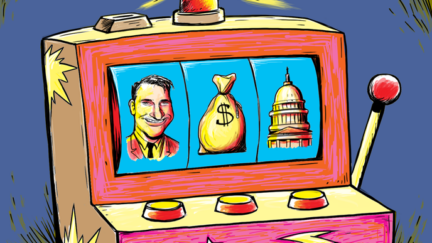
Abramoff: Lobbying Congress
Super-lobbyist Abramoff was caught in a scheme to lobby against his own clients. Was a corrupt individual or a corrupt system – or both – to blame?

Apple Suppliers & Labor Practices
Is tech company Apple, Inc. ethically obligated to oversee the questionable working conditions of other companies further down their supply chain?

Approaching the Presidency: Roosevelt & Taft
Some presidents view their responsibilities in strictly legal terms, others according to duty. Roosevelt and Taft took two extreme approaches.
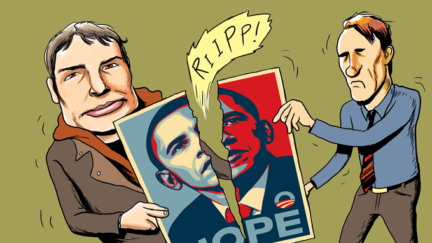
Appropriating “Hope”
Fairey’s portrait of Barack Obama raised debate over the extent to which an artist can use and modify another’s artistic work, yet still call it one’s own.

Arctic Offshore Drilling
Competing groups frame the debate over oil drilling off Alaska’s coast in varying ways depending on their environmental and economic interests.

Banning Burkas: Freedom or Discrimination?
The French law banning women from wearing burkas in public sparked debate about discrimination and freedom of religion.
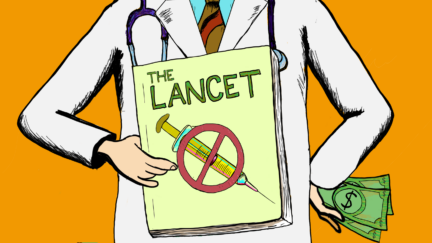
Birthing Vaccine Skepticism
Wakefield published an article riddled with inaccuracies and conflicts of interest that created significant vaccine hesitancy regarding the MMR vaccine.

Blurred Lines of Copyright
Marvin Gaye’s Estate won a lawsuit against Robin Thicke and Pharrell Williams for the hit song “Blurred Lines,” which had a similar feel to one of his songs.

Bullfighting: Art or Not?
Bullfighting has been a prominent cultural and artistic event for centuries, but in recent decades it has faced increasing criticism for animal rights’ abuse.

Buying Green: Consumer Behavior
Do purchasing green products, such as organic foods and electric cars, give consumers the moral license to indulge in unethical behavior?

Cadavers in Car Safety Research
Engineers at Heidelberg University insist that the use of human cadavers in car safety research is ethical because their research can save lives.

Cardinals’ Computer Hacking
St. Louis Cardinals scouting director Chris Correa hacked into the Houston Astros’ webmail system, leading to legal repercussions and a lifetime ban from MLB.

Cheating: Atlanta’s School Scandal
Teachers and administrators at Parks Middle School adjust struggling students’ test scores in an effort to save their school from closure.

Cheating: Sign-Stealing in MLB
The Houston Astros’ sign-stealing scheme rocked the baseball world, leading to a game-changing MLB investigation and fallout.
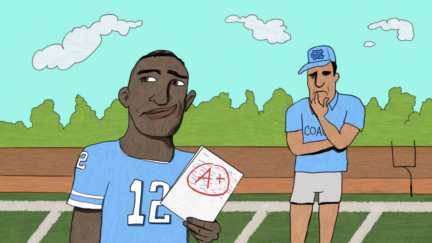
Cheating: UNC’s Academic Fraud
UNC’s academic fraud scandal uncovered an 18-year scheme of unchecked coursework and fraudulent classes that enabled student-athletes to play sports.
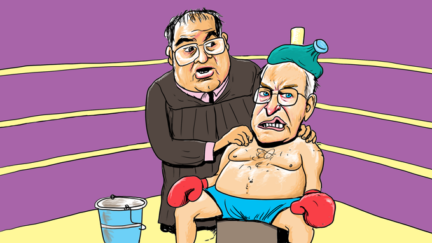
Cheney v. U.S. District Court
A controversial case focuses on Justice Scalia’s personal friendship with Vice President Cheney and the possible conflict of interest it poses to the case.

Christina Fallin: “Appropriate Culturation?”
After Fallin posted a picture of herself wearing a Plain’s headdress on social media, uproar emerged over cultural appropriation and Fallin’s intentions.

Climate Change & the Paris Deal
While climate change poses many abstract problems, the actions (or inactions) of today’s populations will have tangible effects on future generations.
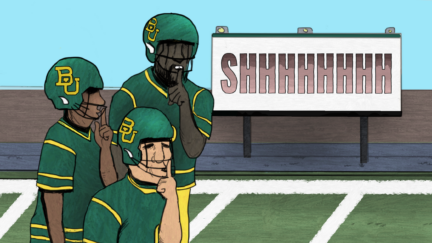
Cover-Up on Campus
While the Baylor University football team was winning on the field, university officials failed to take action when allegations of sexual assault by student athletes emerged.

Covering Female Athletes
Sports Illustrated stirs controversy when their cover photo of an Olympic skier seems to focus more on her physical appearance than her athletic abilities.

Covering Yourself? Journalists and the Bowl Championship
Can news outlets covering the Bowl Championship Series fairly report sports news if their own polls were used to create the news?

Cyber Harassment
After a student defames a middle school teacher on social media, the teacher confronts the student in class and posts a video of the confrontation online.

Defending Freedom of Tweets?
Running back Rashard Mendenhall receives backlash from fans after criticizing the celebration of the assassination of Osama Bin Laden in a tweet.

Dennis Kozlowski: Living Large
Dennis Kozlowski was an effective leader for Tyco in his first few years as CEO, but eventually faced criminal charges over his use of company assets.

Digital Downloads
File-sharing program Napster sparked debate over the legal and ethical dimensions of downloading unauthorized copies of copyrighted music.

Dr. V’s Magical Putter
Journalist Caleb Hannan outed Dr. V as a trans woman, sparking debate over the ethics of Hannan’s reporting, as well its role in Dr. V’s suicide.

East Germany’s Doping Machine
From 1968 to the late 1980s, East Germany (GDR) doped some 9,000 athletes to gain success in international athletic competitions despite being aware of the unfortunate side effects.

Ebola & American Intervention
Did the dispatch of U.S. military units to Liberia to aid in humanitarian relief during the Ebola epidemic help or hinder the process?
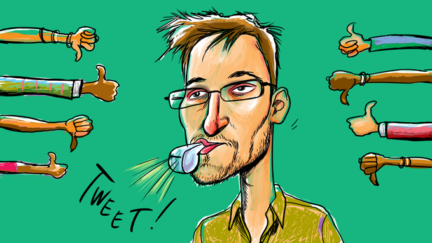
Edward Snowden: Traitor or Hero?
Was Edward Snowden’s release of confidential government documents ethically justifiable?

Ethical Pitfalls in Action
Why do good people do bad things? Behavioral ethics is the science of moral decision-making, which explores why and how people make the ethical (and unethical) decisions that they do.

Ethical Use of Home DNA Testing
The rising popularity of at-home DNA testing kits raises questions about privacy and consumer rights.

Flying the Confederate Flag
A heated debate ensues over whether or not the Confederate flag should be removed from the South Carolina State House grounds.
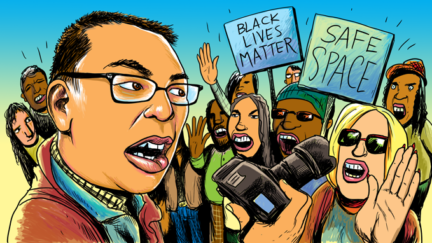
Freedom of Speech on Campus
In the wake of racially motivated offenses, student protests sparked debate over the roles of free speech, deliberation, and tolerance on campus.

Freedom vs. Duty in Clinical Social Work
What should social workers do when their personal values come in conflict with the clients they are meant to serve?

Full Disclosure: Manipulating Donors
When an intern witnesses a donor making a large gift to a non-profit organization under misleading circumstances, she struggles with what to do.
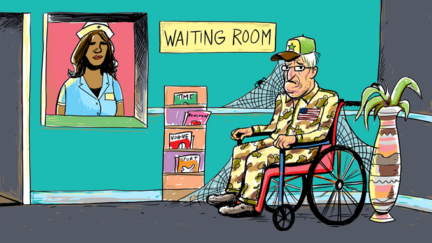
Gaming the System: The VA Scandal
The Veterans Administration’s incentives were meant to spur more efficient and productive healthcare, but not all administrators complied as intended.

German Police Battalion 101
During the Holocaust, ordinary Germans became willing killers even though they could have opted out from murdering their Jewish neighbors.

Head Injuries & American Football
Many studies have linked traumatic brain injuries and related conditions to American football, creating controversy around the safety of the sport.

Head Injuries & the NFL
American football is a rough and dangerous game and its impact on the players’ brain health has sparked a hotly contested debate.

Healthcare Obligations: Personal vs. Institutional
A medical doctor must make a difficult decision when informing patients of the effectiveness of flu shots while upholding institutional recommendations.

High Stakes Testing
In the wake of the No Child Left Behind Act, parents, teachers, and school administrators take different positions on how to assess student achievement.

In-FUR-mercials: Advertising & Adoption
When the Lied Animal Shelter faces a spike in animal intake, an advertising agency uses its moral imagination to increase pet adoptions.

Krogh & the Watergate Scandal
Egil Krogh was a young lawyer working for the Nixon Administration whose ethics faded from view when asked to play a part in the Watergate break-in.

Limbaugh on Drug Addiction
Radio talk show host Rush Limbaugh argued that drug abuse was a choice, not a disease. He later became addicted to painkillers.

U.S. Olympic swimmer Ryan Lochte’s “over-exaggeration” of an incident at the 2016 Rio Olympics led to very real consequences.
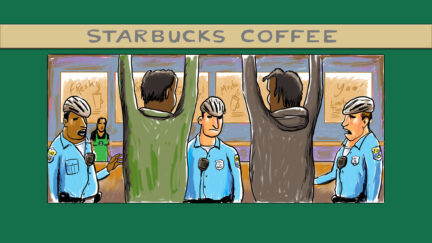
Meet Me at Starbucks
Two black men were arrested after an employee called the police on them, prompting Starbucks to implement “racial-bias” training across all its stores.

Myanmar Amber
Buying amber could potentially fund an ethnic civil war, but refraining allows collectors to acquire important specimens that could be used for research.

Negotiating Bankruptcy
Bankruptcy lawyer Gellene successfully represented a mining company during a major reorganization, but failed to disclose potential conflicts of interest.

Pao & Gender Bias
Ellen Pao stirred debate in the venture capital and tech industries when she filed a lawsuit against her employer on grounds of gender discrimination.

Pardoning Nixon
One month after Richard Nixon resigned from the presidency, Gerald Ford made the controversial decision to issue Nixon a full pardon.

Patient Autonomy & Informed Consent
Nursing staff and family members struggle with informed consent when taking care of a patient who has been deemed legally incompetent.
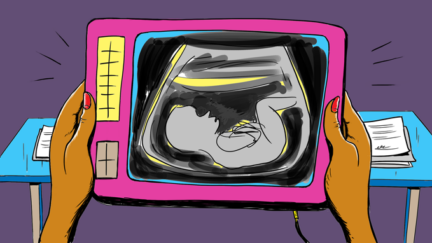
Prenatal Diagnosis & Parental Choice
Debate has emerged over the ethics of prenatal diagnosis and reproductive freedom in instances where testing has revealed genetic abnormalities.
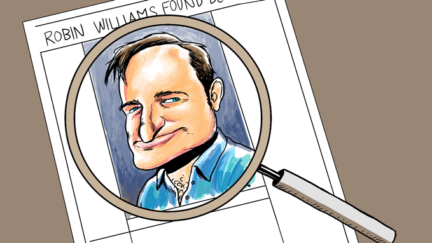
Reporting on Robin Williams
After Robin Williams took his own life, news media covered the story in great detail, leading many to argue that such reporting violated the family’s privacy.

Responding to Child Migration
An influx of children migrants posed logistical and ethical dilemmas for U.S. authorities while intensifying ongoing debate about immigration.
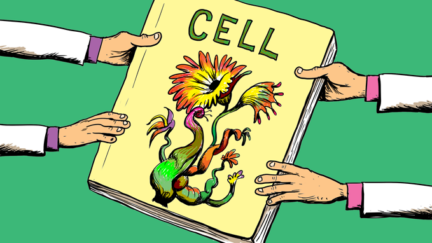
Retracting Research: The Case of Chandok v. Klessig
A researcher makes the difficult decision to retract a published, peer-reviewed article after the original research results cannot be reproduced.

Sacking Social Media in College Sports
In the wake of questionable social media use by college athletes, the head coach at University of South Carolina bans his players from using Twitter.
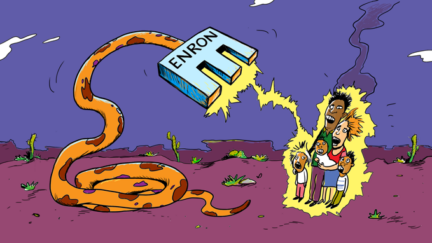
Selling Enron
Following the deregulation of electricity markets in California, private energy company Enron profited greatly, but at a dire cost.

Snyder v. Phelps
Freedom of speech was put on trial in a case involving the Westboro Baptist Church and their protesting at the funeral of U.S. Marine Matthew Snyder.
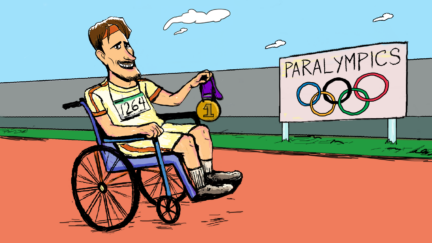
Something Fishy at the Paralympics
Rampant cheating has plagued the Paralympics over the years, compromising the credibility and sportsmanship of Paralympian athletes.

Sports Blogs: The Wild West of Sports Journalism?
Deadspin pays an anonymous source for information related to NFL star Brett Favre, sparking debate over the ethics of “checkbook journalism.”

Stangl & the Holocaust
Franz Stangl was the most effective Nazi administrator in Poland, killing nearly one million Jews at Treblinka, but he claimed he was simply following orders.
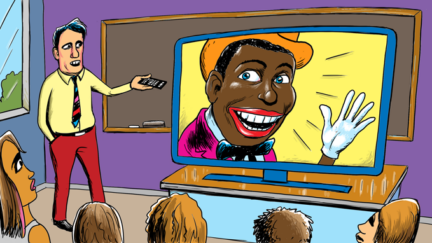
Teaching Blackface: A Lesson on Stereotypes
A teacher was put on leave for showing a blackface video during a lesson on racial segregation, sparking discussion over how to teach about stereotypes.

The Astros’ Sign-Stealing Scandal
The Houston Astros rode a wave of success, culminating in a World Series win, but it all came crashing down when their sign-stealing scheme was revealed.

The Central Park Five
Despite the indisputable and overwhelming evidence of the innocence of the Central Park Five, some involved in the case refuse to believe it.

The CIA Leak
Legal and political fallout follows from the leak of classified information that led to the identification of CIA agent Valerie Plame.

The Collapse of Barings Bank
When faced with growing losses, investment banker Nick Leeson took big risks in an attempt to get out from under the losses. He lost.

The Costco Model
How can companies promote positive treatment of employees and benefit from leading with the best practices? Costco offers a model.
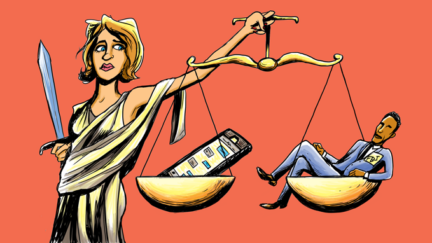
The FBI & Apple Security vs. Privacy
How can tech companies and government organizations strike a balance between maintaining national security and protecting user privacy?
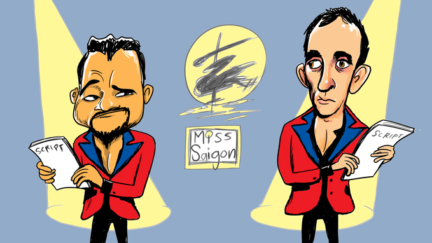
The Miss Saigon Controversy
When a white actor was cast for the half-French, half-Vietnamese character in the Broadway production of Miss Saigon , debate ensued.

The Sandusky Scandal
Following the conviction of assistant coach Jerry Sandusky for sexual abuse, debate continues on how much university officials and head coach Joe Paterno knew of the crimes.

The Varsity Blues Scandal
A college admissions prep advisor told wealthy parents that while there were front doors into universities and back doors, he had created a side door that was worth exploring.
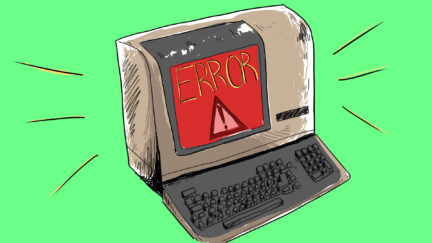
Providing radiation therapy to cancer patients, Therac-25 had malfunctions that resulted in 6 deaths. Who is accountable when technology causes harm?

Welfare Reform
The Welfare Reform Act changed how welfare operated, intensifying debate over the government’s role in supporting the poor through direct aid.

Wells Fargo and Moral Emotions
In a settlement with regulators, Wells Fargo Bank admitted that it had created as many as two million accounts for customers without their permission.
Stay Informed
Support our work.
20 Ethical Argument Essay Topics for an Aspiring Student

- Potential Causes of Breast Cancer from Soaps and Deodorants
- Adopting a Child of a Different Ethnicity
- Pros and Cons of Vitamin Supplements and Whether They Do More Harm than Good to the Health
- The Potential Consequences of Plastic Surgery in the Long Term
- Human Cloning – A Far-Fetched Idea or Just a Genetic Disaster?
- Adopting the Death Penalty in All the States Around the US
- Should Teens Consider Abortion without Their Parents’ Approval?
- Reasons for Parents to Choose Homeschooling and Not Public Schooling for their Kids
- To Vote or Not to Vote on Election Day: Can Your Vote Make a Difference?
- Driving an Electric Car Can Help Save the Planet
- Social Media and Its Effects on Human Perception
- Bullying in Schools and the Effects of Bullying on a Child’s Personality
- Social Media and Its Effects on Human Socialization
- Reading Paper Books vs. Reading eBooks
- Combating Music Piracy: Can We Put an End to Music Piracy and Compel People to Buy Rather than “Steal”?
- The Benefits of Eating Organic Food & Reasons Why Going Bio Is Healthier
- Advanced Car Technologies Can Completely Change the Way People Drive Their Cars
- How Global Warming Is Affecting the World’s Fauna and Flora
- Alzheimer’s & Potential Treatment that Might Prevent the Materialization of the Disease
- Reasons Why Fad Diets Don’t Work & What Can You Do to Lose Weight the Healthy Way
There are hundreds of other topics you can pick for your college essay; however this depends on the subject assigned by your teacher. The 20 ethical argument essay topics mentioned above should serve you as inspiration! Choose the one that appeals to you most and make an impression on your professors with the coolest argumentative paper!
If you have no time for writing a decent essay you can count on The Pensters – essay writing service that operates over decade! Here you can order any kind of academic papers and of course you can buy argumentative essays written by experienced writers.
Our statistics
Ethical Reasoning Theories and Human Rights Essay (Critical Writing)
Definition of ethical theories, ethical reasoning of child, youth, adulthood, mature adult, ethical reasoning theories: egoism, utilitarianism, rights and justice, the weakness of egoism, the weakness of utilitarianism, the weakness of rights and justice approach, fundamental human rights.
Ethical theories are a set of rules or guidelines that guide the process of decision making by business leaders. They are applied to issues concerning human resources, corporate social responsibility, and evaluation of managers’ performance (Crossan, Mazutis, & Seijts , 2013). Each theory has a different role and can act as a predictor of the outcomes of an action or can be used to follow up on someone’s duty or performance.
A child is egocentric and tends to avoid punishments for wrongdoings. The child feels special, and their thoughts have not organized any order but move from one thing to another without any logic (Saxe, Whitfield‐Gabrieli, Scholz, & Pelphrey, 2009).
At this stage, the person does what he or she thinks. Delayed reasoning, self-centeredness, and tendencies to avoid punishment characterize this stage.
People tend to think of prosperity, which draws them together to work as a group to succeed. They have concern for the society, which makes them reason with diligence.
Mature Adults
They reason well and are responsible for their actions, which are fair and just. They apply critical reasoning and can distinguish good from bad and perform an in-depth analysis of issues simultaneously (Blasi, 2009).
Egoism focuses on individual benefits and can be adopted as long as it increases personal gains.
Utilitarianism
Utilitarianism involves the assessment of the consequences of any action taken by the business since it involves a common good for the majority. Sometimes utilitarianism may interfere with individual freedom for the common good of everyone. An individual acts irrespective of their personal feelings provided the outcomes benefit most people. In rule utilitarianism, even though the actions taken benefit many people, they should be fair and within the law (Woiceshyn, 2011).
Rights and Justice
There are fundamental things that one is entitled to based on the analysis of human dignity. For instance, justice requires that all individuals should be treated with fairness. However, exceptions might exist in special cases. Nevertheless, the ultimate decision must be within ethical theories. In rare circumstances, an individual in power can bestow a right to another person.
Since egoism is self-centered or is based on individual gains, there should be no conflict between the situations in question. In unemployment and environmental pollution, egoism is adversely affected.
It compares the benefits with the total costs. If one option causes massive benefits to many people, utilitarianism holds. For instance, euthanasia can be advocated if the death of a patient saves the concerned family the costs to be incurred in the management of a terminal illness. However, if the parties have personal gains, this principle is hampered. Business leaders employ their past experiences to predict the outcome of an action.
However, in reality, no one is certain about the outcomes. Uncertainty, in this case, may result in very poor outcomes that may benefit few people or lack any benefit thereby leading to a poor business reputation alongside losses. In act utilitarianism, there is no fairness applied (DesJardins & McCall, 2014). Therefore, the rights of one individual might be infringed to derive more benefits for other people.
Conflicts between rights and justice may exist. For example, the construction of a social amenity may displace some people to provide space, yet the amenity benefits many people. Rights and justice differ in various countries and are determined by the laws of society (Woiceshyn, 2011). For example, in the United States, the right to freedom is observed by all Americans and supported by their constitution because their founding father fought for the right to freedom.
Human rights are privileges that an individual is entitled to by the state for survival irrespective of race, religion social class or color (Scherer & Palazzo, 2011).
Fundamental human rights include security, religion, speech, political affiliation, education, health, life, and ownership of property.
Blasi, A. (2009). The moral functioning of mature adults and the possibility of fair moral reasoning. In Narvaez, D. & Lapsley, D. (Eds.), Personality, Identity, and Character , (pp. 396-340). Cambridge: Cambridge University Press. Web.
Crossan, M., Mazutis, D., & Seijts, G. (2013). In search of virtue: The role of virtues, values and character strengths in ethical decision making. Journal of Business Ethics , 113 (4), 567-581. Web.
DesJardins, J. R., & McCall, J. J. (2014). Contemporary issues in business ethics . Brooklyn, MA: Cengage Learning. Web.
Saxe, R. R., Whitfield‐Gabrieli, S., Scholz, J., & Pelphrey, K. A. (2009). Brain regions for perceiving and reasoning about other people in school‐aged children. Child development , 80 (4), 1197-1209. Web.
Scherer, A. G., & Palazzo, G. (2011). The new political role of business in a globalized world: A review of a new perspective on CSR and its implications for the firm, governance, and democracy. Journal of Management Studies , 48 (4), 899-931. Web.
Woiceshyn, J. (2011). A model for ethical decision making in business: Reasoning, intuition, and rational moral principles. Journal of Business Ethics , 104 (3), 311-323. Web.
- Ethical egoism in public and private lives
- Ethical and Psychological Egoism
- The Theory of Ethical Egoism and Utilitarianism
- Personal and Professional Ethics Analysis
- Fate of Friendship and Contemporary Ethics
- Immanuel Kant and John Stuart Mill Ethical Theories
- The Concept of Ethics in Groups
- Jean McGuire Case: Moral Issues
- Chicago (A-D)
- Chicago (N-B)
IvyPanda. (2020, July 16). Ethical Reasoning Theories and Human Rights. https://ivypanda.com/essays/ethical-reasoning-theories-and-human-rights/
"Ethical Reasoning Theories and Human Rights." IvyPanda , 16 July 2020, ivypanda.com/essays/ethical-reasoning-theories-and-human-rights/.
IvyPanda . (2020) 'Ethical Reasoning Theories and Human Rights'. 16 July.
IvyPanda . 2020. "Ethical Reasoning Theories and Human Rights." July 16, 2020. https://ivypanda.com/essays/ethical-reasoning-theories-and-human-rights/.
1. IvyPanda . "Ethical Reasoning Theories and Human Rights." July 16, 2020. https://ivypanda.com/essays/ethical-reasoning-theories-and-human-rights/.
Bibliography
IvyPanda . "Ethical Reasoning Theories and Human Rights." July 16, 2020. https://ivypanda.com/essays/ethical-reasoning-theories-and-human-rights/.

IMAGES
VIDEO
COMMENTS
example of a comparative argument that lacks a grounds for comparison. Many of the paper assignments for the course suggest the grounds for the compari-son for you by posing questions that are meant to guide your comparison. Con-sider, for instance, the following essay prompt: Compare Ivan's moral arguments with those of Job.
Ethics essay example 1. When writing papers on ethics, here are several tips to help you complete an excellent essay: Creating this essay is a common exercise in academics that allows students to build critical skills. When you begin writing, state your stance on an issue and provide arguments to support your position.
Writing Outline and Structure of an Ethics Paper. Every essay has a structure that makes it a solid piece of writing with straight reasoning and argumentation, and an ethics paper is not an exclusion. This paper has an introduction, body paragraphs, and conclusion. Below, we will describe how each part of ethical papers should be organized and ...
Start with choosing an issue you want to discuss in the paper. Some good ethics essay topics and examples we can suggest are: The aspects of utilitarianism as an ethical theory. Ethical dilemmas in the field of healthcare. Theories that explain human behavior. The significance of the personal code of ethics.
Ethics is the study of the standards of right and wrong that inform us as to how we ought to behave. These standards relate to unwritten rules that are necessary for humans to live amongst each other, such as "don't hurt others.". We function better as a society when we treat each other well. Ethics can also refer to the standards themselves.
Ethical Reasoning - Definition, Examples, Processes Essay. Ethics defines the society in terms of what is wrong or right. There are concepts that each individual in the society identifies with when relating to other people. The decisions that people make in the society may have positive or negative consequences.
The Closure Rule. A failed defense of a standpoint must result in the protagonist retracting the standpoint, and a successful defense of a standpoint must result in the antagonist retracting his or her doubts. (van Eemeren et al. 134) This seems the most obvious rule, yet it is one that most public arguments ignore.
1. The Philosophical Importance of Moral Reasoning 1.1 Defining "Moral Reasoning" This article takes up moral reasoning as a species of practical reasoning - that is, as a type of reasoning directed towards deciding what to do and, when successful, issuing in an intention (see entry on practical reason).Of course, we also reason theoretically about what morality requires of us; but the ...
For example, sound ethical reasoning must be clear, accurate, precise, relevant, logical and non-trivial. In some cases, it must also deal with complexities and reason within multiple viewpoints.). . .32-33 Ethical Reasoning Abilities. (There are intellectual abilities essential to ethical reasoning.) 34 Essential Ethical Traits.
Exercise in ethical reasoning: 2700-3300 words on Nietzsche or Freud. The final paper requires that you engage in ethical reasoning with regard to specific aspects of Nietzsche's or Freud's theoretical projects. You may address both Nietzsche and Freud, but you must first discuss the comparison with your TF and receive permission to pursue it.
Ethics Resources. A Framework for Ethical Decision Making. This document is designed as an introduction to thinking ethically. Read more about what the framework can (and cannot) do. We all have an image of our better selves—of how we are when we act ethically or are "at our best.". We probably also have an image of what an ethical ...
Ethical reasoning is best evaluated through essays or oral examinations in response to specific ethical problems. They do not lend themselves well to multiple-choice or short-answer assessments. For example, a simple ethical problem is, "James saw Ben purchase answers for an exam from an Internet site. ... The sample essay above is a strong ...
1. Make sure that you understand the assignment. Before you begin your ethics paper, take some time to read through the assignment guidelines, ask questions about the assignment, and think through what you need to do in this paper. Get answers to some questions before you start on the assignment. You should ask: [1]
The Ethical Analysis assignment is designed to help you meet two objectives that are important for analyzing an ethical issue. It will help you to. apply critical reasoning to an ethical issue and. utilize reasons and arguments appropriate to debate over an ethical issue. In addition, this project provides an opportunity to revisit an objective ...
221 Ethical Dilemma Essay Topics & Examples. An ethical dilemma essay has become an essential part of education for many professions that involve working with people. Below, we've collected topics for writing a paper on this subject. The concepts of ethics and moral dilemmas have originated long ago.
40 Writing Topics for Argumentative and Persuasive Essays. By Richard Nordquist. Courage can come in subtle forms, and that can include reporting seeing someone cheat on a test. Cheating on a test might not seem like such a big deal; perhaps you've cheated on a test yourself. But it is against the policies of schools and universities worldwide.
Case Studies. More than 70 cases pair ethics concepts with real world situations. From journalism, performing arts, and scientific research to sports, law, and business, these case studies explore current and historic ethical dilemmas, their motivating biases, and their consequences. Each case includes discussion questions, related videos, and ...
There are several important aspects of conformity that can assist one in ethical reasoning in the scenario given above. The first aspect is that conformity builds perceptions of the individuals within the community, with the community being classmates (Browne, 2019). In the given situation, the student who saw the practice of putting someone ...
The term ethics may refer to the philosophical study of the concepts of moral right and wrong and moral good and bad, to any philosophical theory of what is morally right and wrong or morally good and bad, and to any system or code of moral rules, principles, or values. The last may be associated with particular religions, cultures, professions, or virtually any other group that is at least ...
This essay argues that an emphasis on the practice of ethical reasoning speaks to legitimate public interests in higher education, serves undergraduate students' personal development and professional preparation, and provides an opportunity for dynamic engagement with religious ethics. ... As these examples indicate, Catholic institutions use ...
The paper discusses the three essential principles for ethical reasoning, including elements of thought, intellectual standards, and intellectual traits. ... "The Three Essential Principles for Ethical Reasoning" is published exclusively on IvyPanda's free essay examples database. You can use it for research and reference purposes to write your ...
In the meantime, we've prepared a list with 20 ethical argument essay topics that might pique your interest. Potential Causes of Breast Cancer from Soaps and Deodorants. Adopting a Child of a Different Ethnicity. Pros and Cons of Vitamin Supplements and Whether They Do More Harm than Good to the Health. The Potential Consequences of Plastic ...
Ethical theories are a set of rules or guidelines that guide the process of decision making by business leaders. They are applied to issues concerning human resources, corporate social responsibility, and evaluation of managers' performance (Crossan, Mazutis, & Seijts, 2013). Each theory has a different role and can act as a predictor of the ...